Saturday, 25th of November
Cadiz
I’ve been back in Spain for a good week now. Now it’s about getting around the southern tip of Gibraltar/Tarifa as quickly as possible. Winter is approaching and with it some stormy days with heavy seas. There are hardly any touring sailors left. Normally I am the only guest in the ports. It started in Vila Real, but there are no longer any touring sailors in Mazagón, Chipiona and here in Cadiz. The last port with touring sailors was Lagos, that was everyone who wanted to go further south to the Canary Islands and then to the Caribbean. Clearly you can see this on marinetraffic.com, nobody wants to go to the Mediterranean any more. The temperatures have also fallen and are usually only in the single digits at night. Only the sun is still quite warm during the day.
Along the coast as far as Huelva there are sandbanks in front of the marshland, which are consistently developed for tourism. You get the impression that every bit of beach is utilized. After Huelva there are also endless beaches, but they are very lonely. This is not due to the time of year; there are no buildings. Huelva itself is an industrial city, which unfortunately shaped up Mazagón. I’ve never seen so much rubbish on the streets (including dog waste) in Spain before. Nevertheless, I stayed here for 3 days to wait for some wind. This seems to be pretty rare here. Unfortunately, even on the way to Chipiona, there was not much sign of the forecast north-westerly wind.
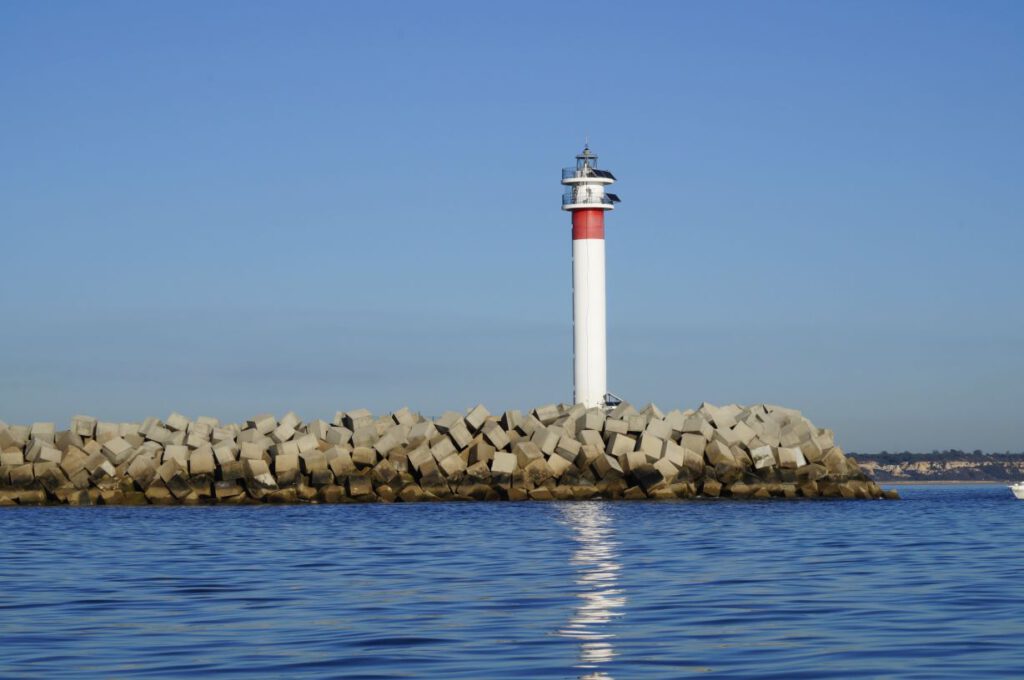
The entrance to Huelva and Mazagón. They named the beacon after Juan Carlos I, an insult to his majesty (?) or with wise foresight in view of the accusations that would later be levelled against Juan Carlos I and the proceedings that had been initiated against him.
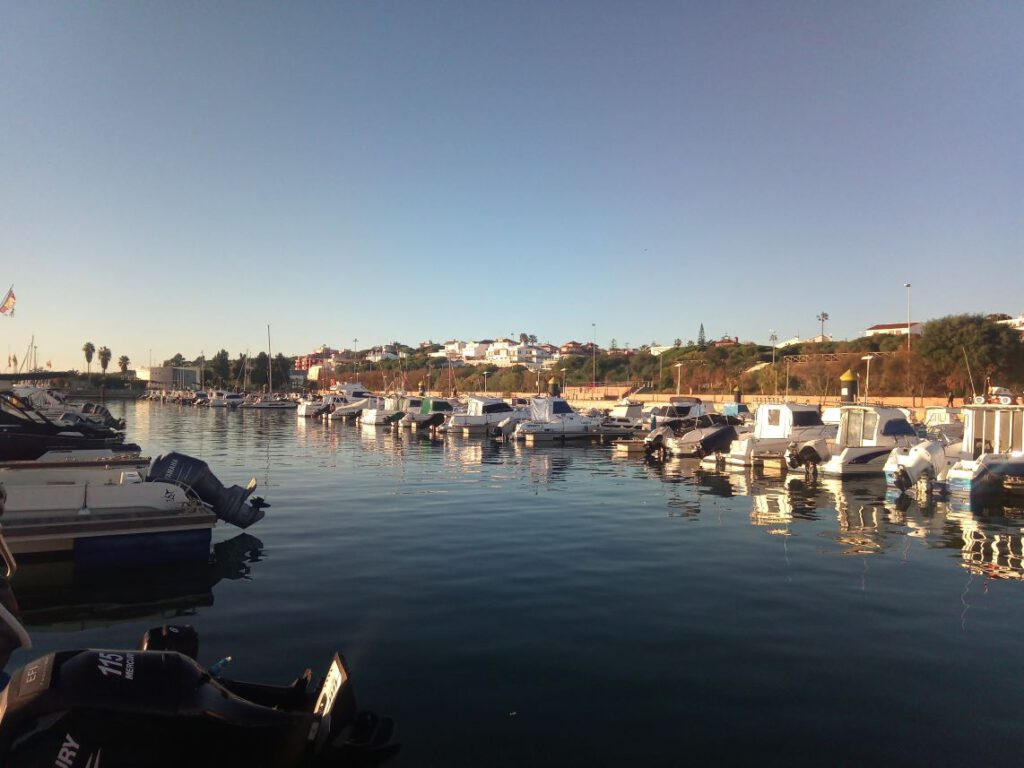
In the evening, the view of the riverside road gave me a good impression of Mazagón. The next day, however, I saw the rubbish on the streets.
In contrast, this view from board made me curious about Chipiona, and I was not disappointed.
Chipiona is a pearl on this coast, a distinctive tourist resort, but only in summer, a good 100,000 tourists come. I walked through deserted streets, many flats and hotels, but also bodegas and restaurants closed. From what I’ve read it’s mostly Spanish tourists and this city is probably less known internationally. Tourists not piled up in high-rise buildings, but rather spread out over a large area in low-rise buildings.
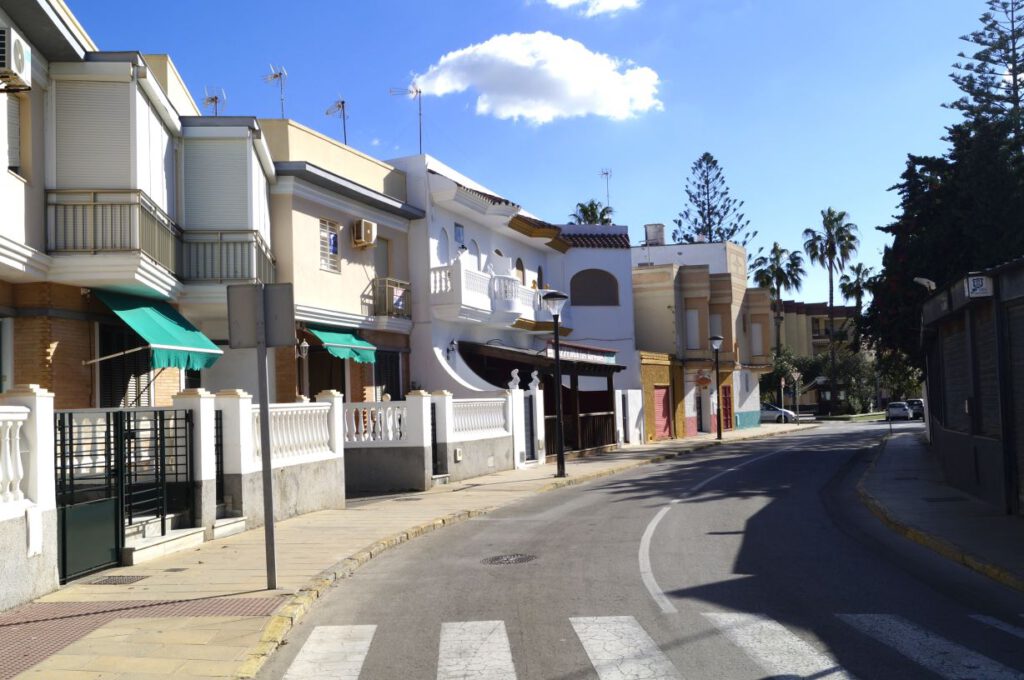
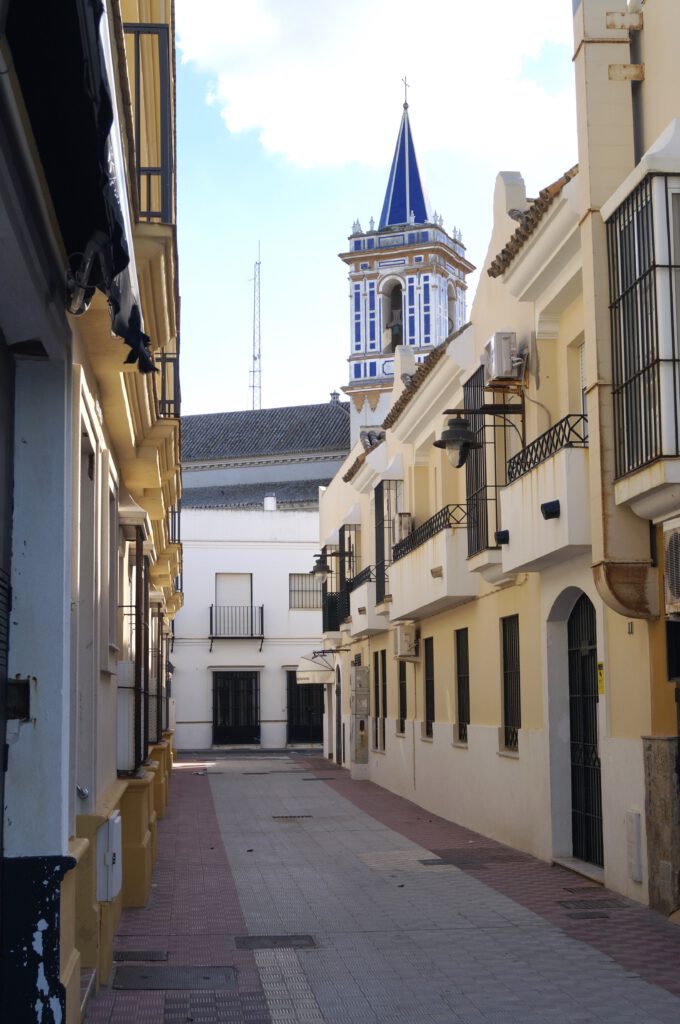
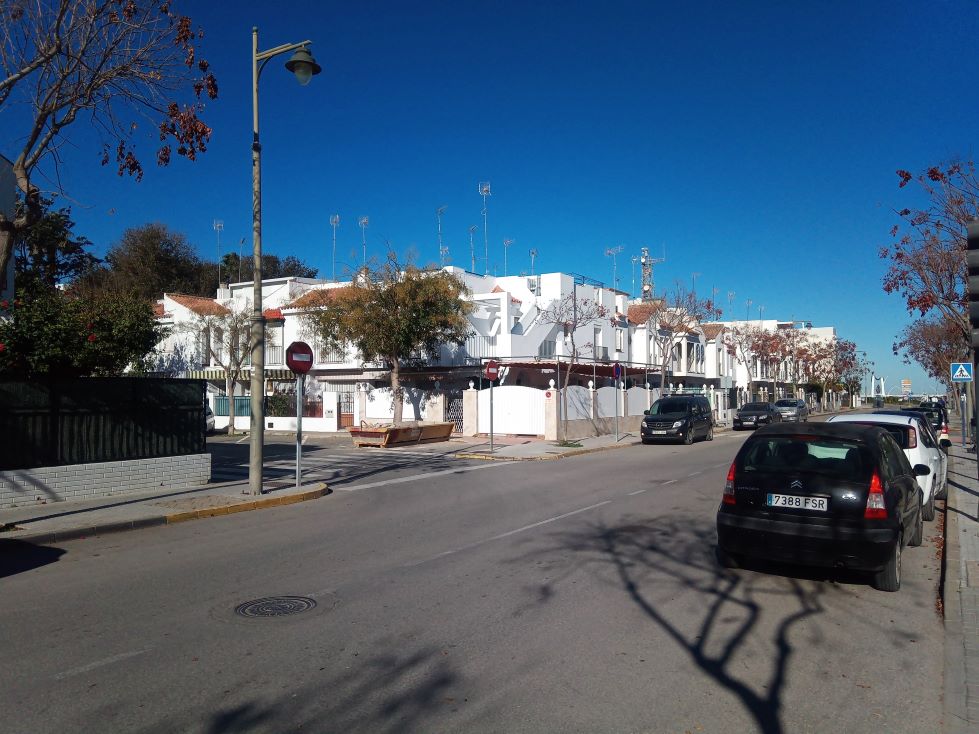
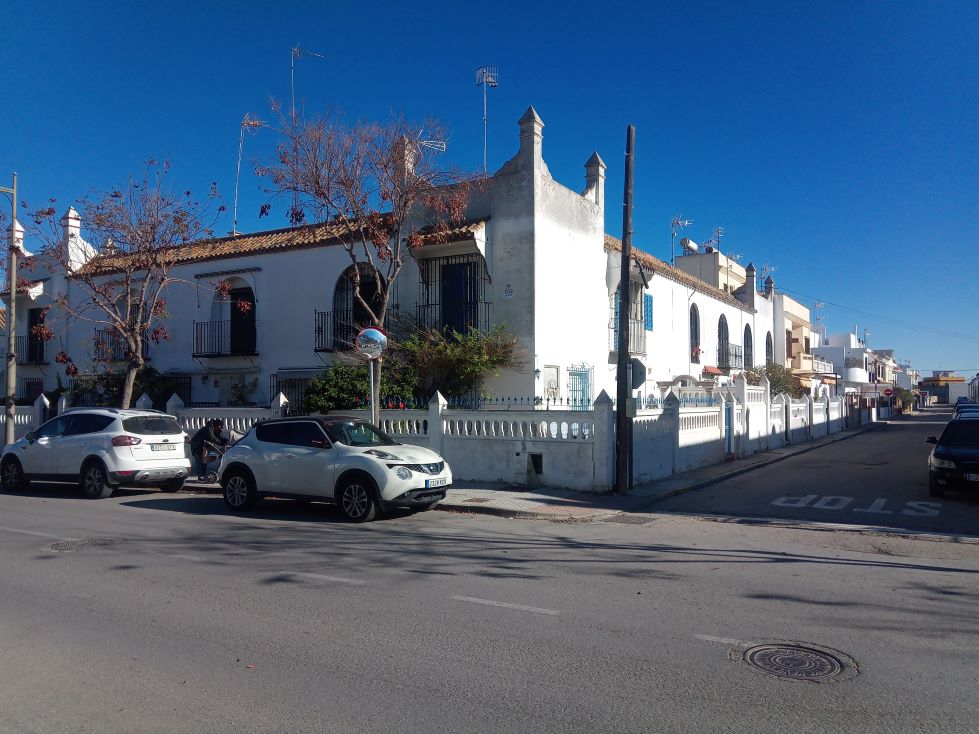
Many beautiful alleyways
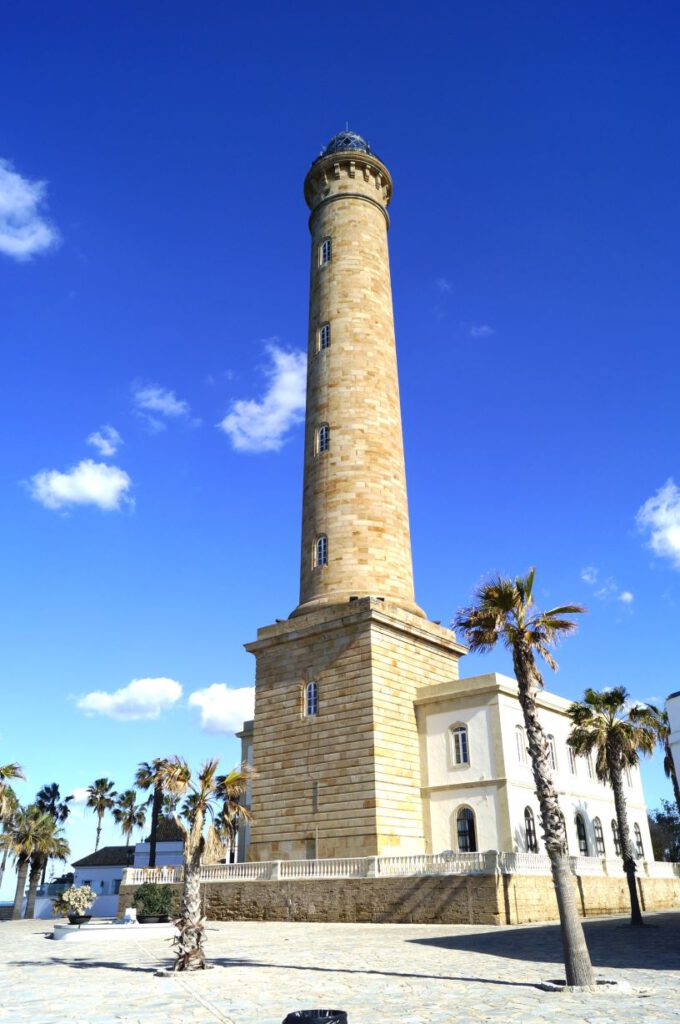
The Faro de Chipiona lighthouse, built in 1872, is said to be the tallest in Spain at 69 metres and is certainly one of the world’s top traditional lighthouses.
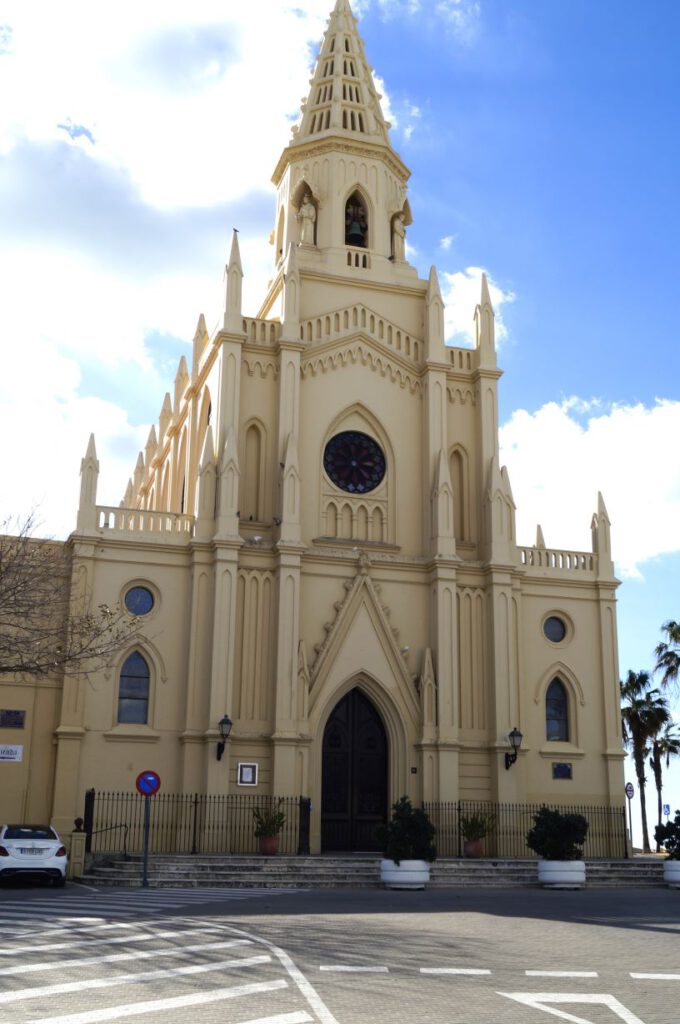
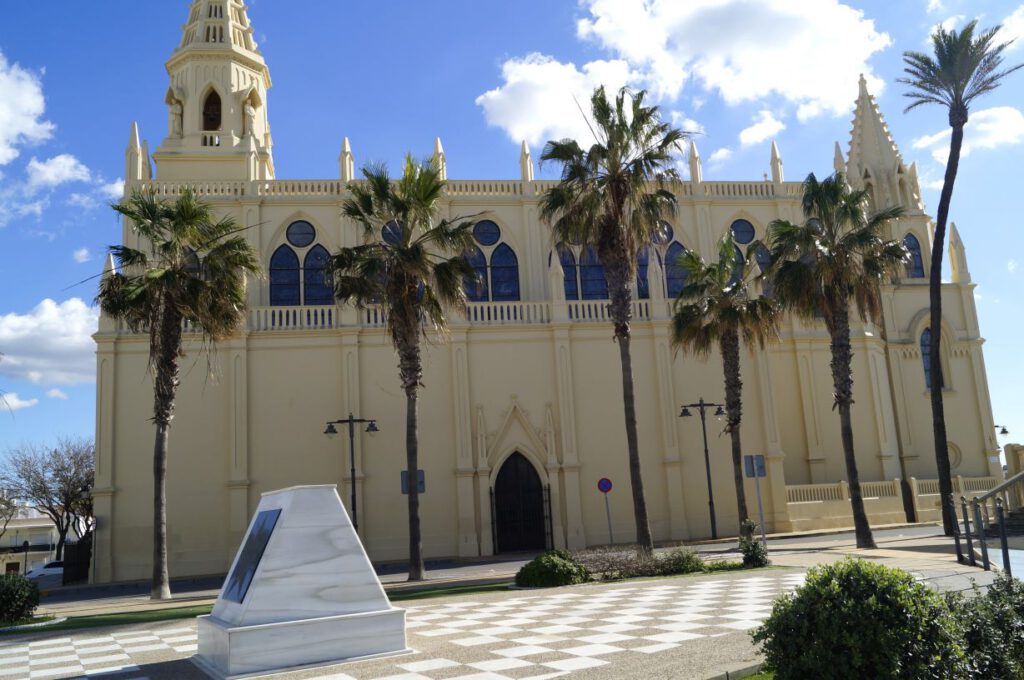
They are particularly proud of the Santuario de Nuestra Señora de Regla de Chipiona.
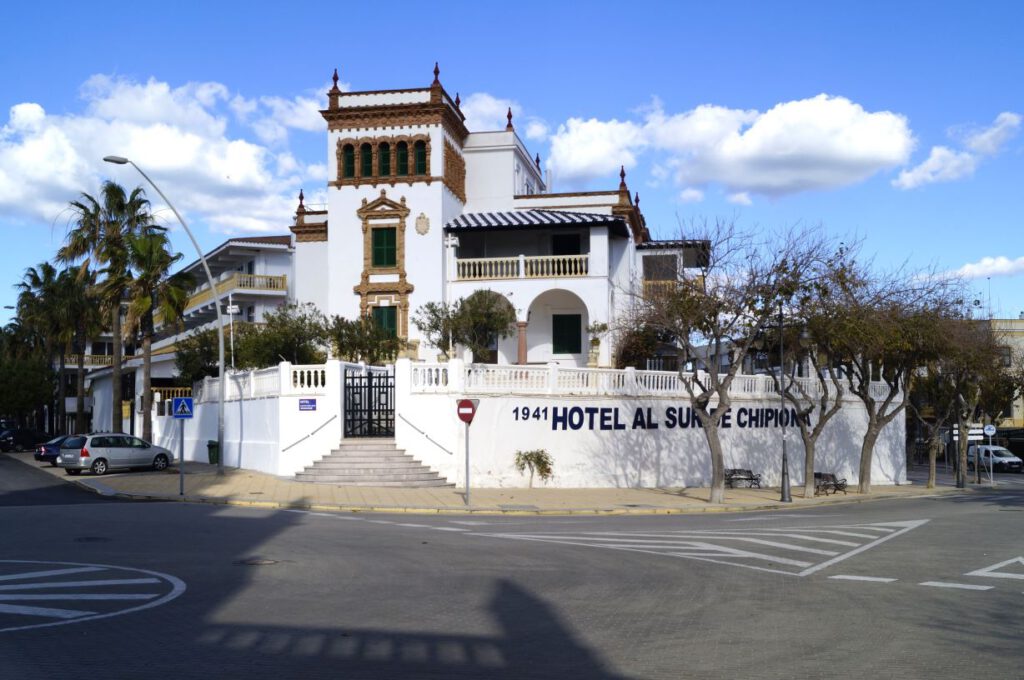
Beautiful old hotels
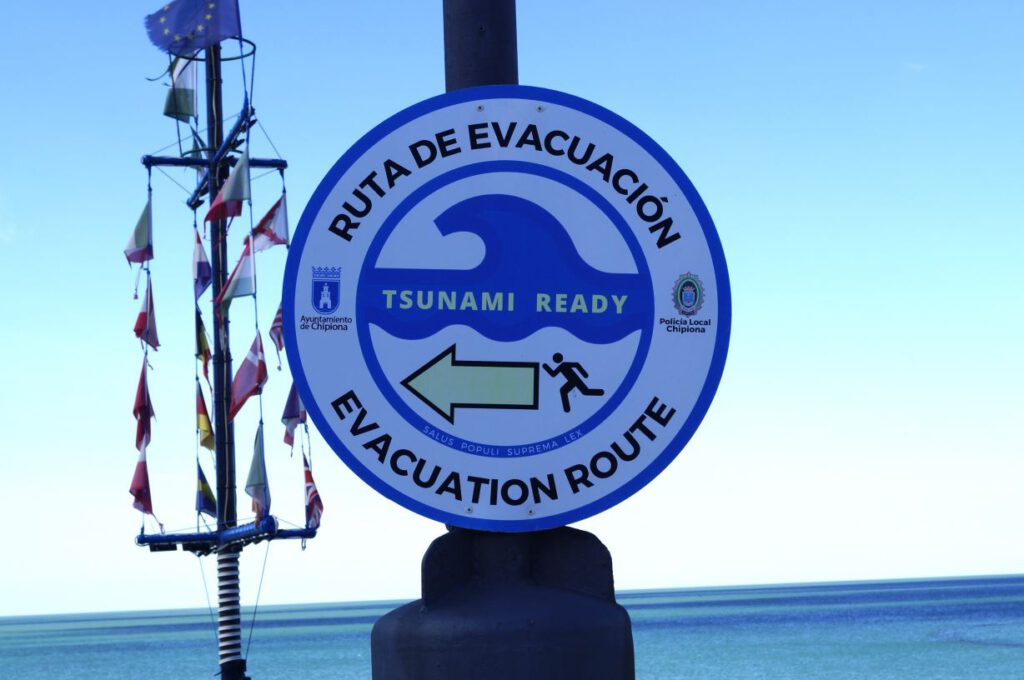
They take the tsunamis very seriously, but I wondered how far you should walk on this flat land.
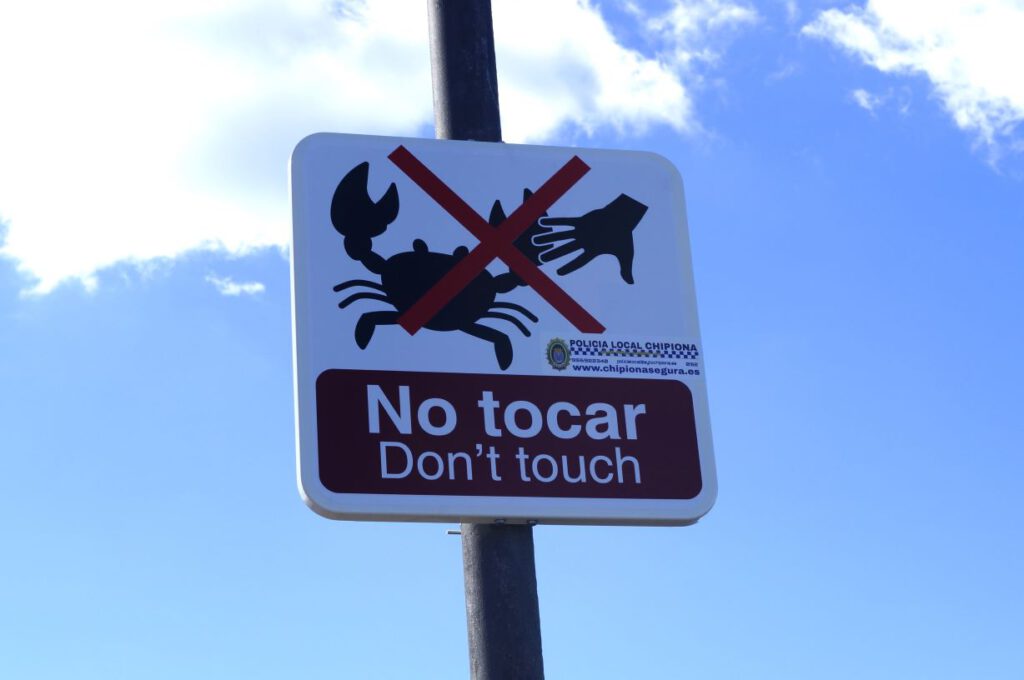
Funny signs
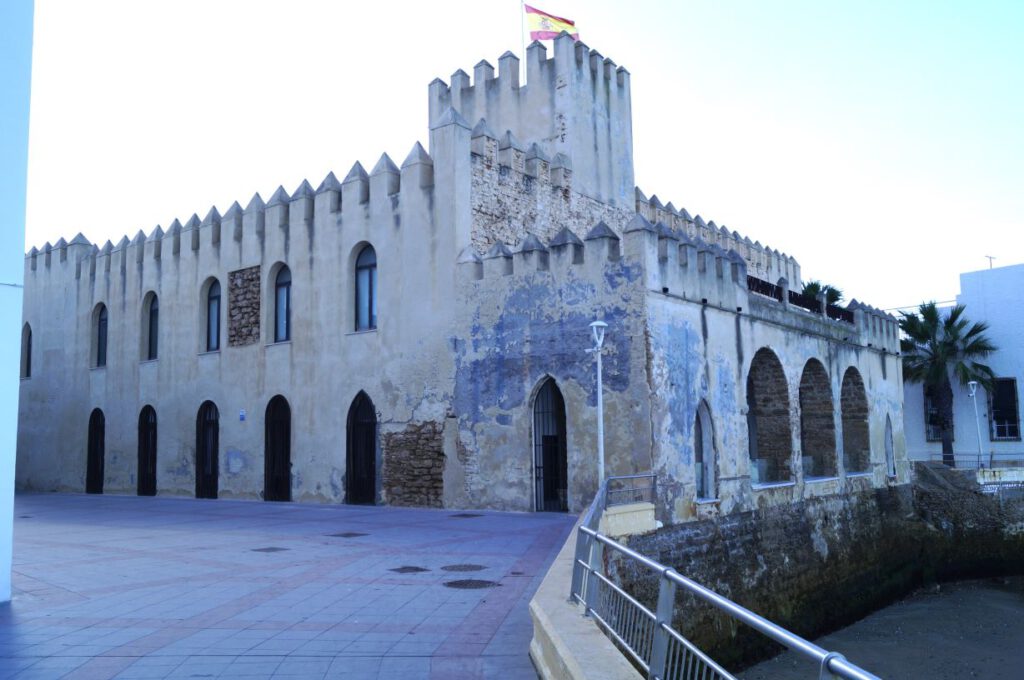
There is also a Castillo in Chipiona.
Oh yes, those fish. They can be found in many harbours on the coasts of Spain and Portugal. Since the Algarve, however, they have become more noticeable. Not only do they slurp at the surface day and night, no, they ram amica underwater at night, these blind fish. Well, they bump into the underwater hull and you can hear that very clearly. They are nocturnal disturbers of the peace in these very quiet, lonely harbours.
The coast from Chipiona to Rota off the Bay of Cádiz. I really was able to sail beautifully again.
Platanós de Canariás on a banana freighter.
Thursday, 30th of November
La Linea de la Concepción
After 2 days of recovery from the two sailing trips, I am now able to document the last events. There was simply too much adrenaline in the game to overcome the difficult situations. I was expecting the Tarifa headland to be unpleasant, but the fact that Cape Trafalgar is annoying even in calm conditions was surprising. Both times, I had to struggle with current-related waves, once with no wind and once with 5-6 Bft. I was able to take a few pictures.
In Cádiz, I wanted to wait for the right weather window. However, the wait only lasted 2 days, and then I went to the southern tips of Spain. Here in winter you will never find perfect conditions. The first day to Barbate, 38 nautical miles, was a day without any wind. On the second day from Barbate around Tarifa to Gibraltar (34 nautical miles), there was supposed to be 3–5 Bft from the west and, above all, there was a flowing current in east direction from midday. Anyway, the current is the most important thing around here, and sailing against the current is more than bad, that would be crazy. The forecasts sounded very good. I had to go.
I was only able to visit Cádiz for a day, but at least I found the nice spots straight away. It’s a large city with a big harbour and lots of traffic. Finding the old town is not that difficult, but the fact that I stumbled straight into it saved me the trouble of searching.
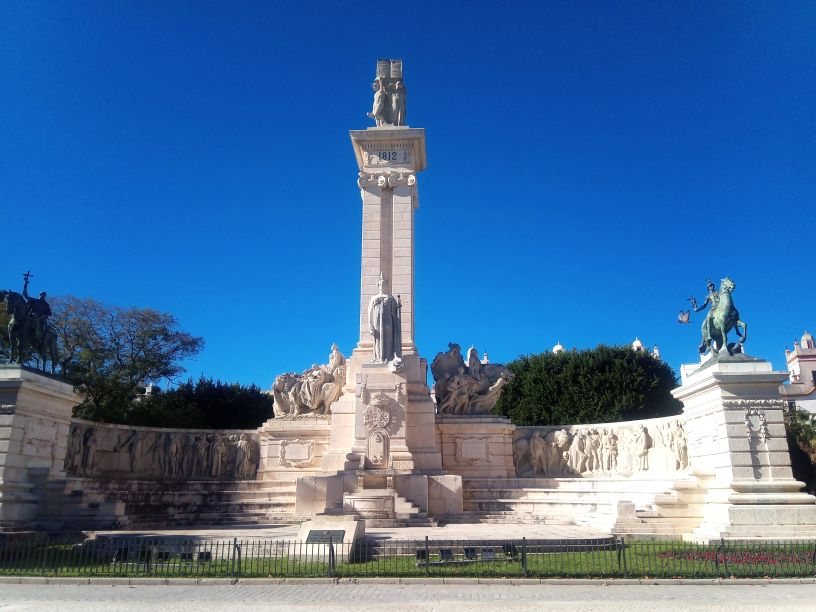
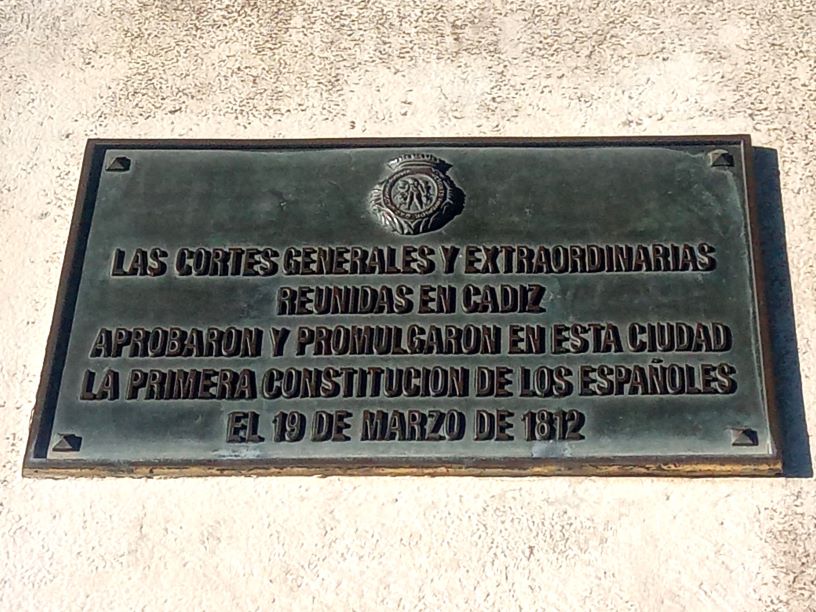
Firstly, I stood in front of a large monument that didn’t mean much to me at first, but with the translation tools that you always have with you these days, I was able to make sense of it. It was here in Cádiz that Spain’s first constitution was adopted in 1812. Yes, you can afford a monument like that.
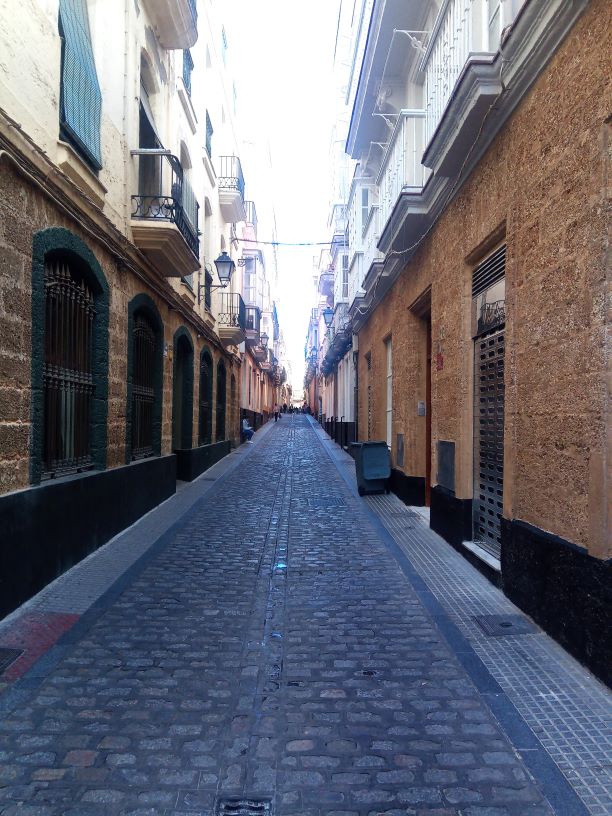
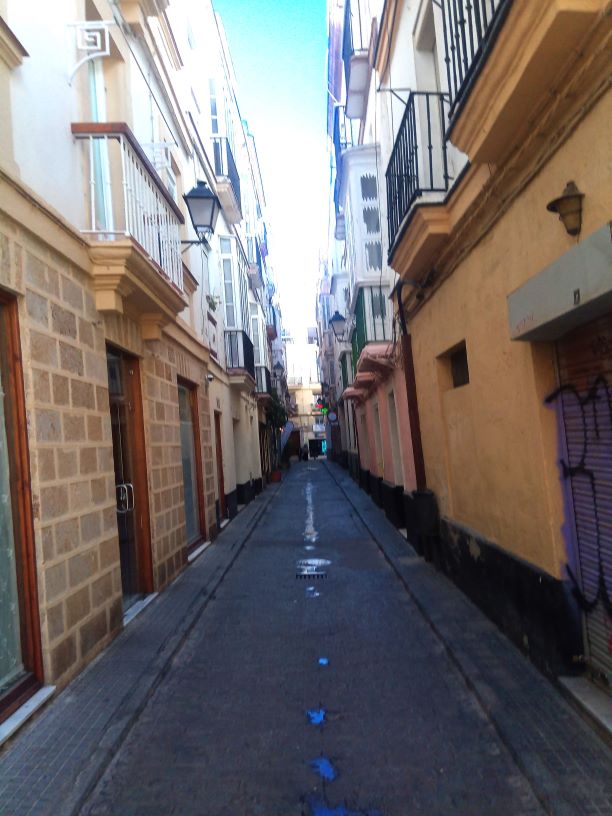
The alleys of Cádiz
Cities sometimes look nicer from the outside, but in Cádiz it’s the other way round.
The industrial harbour
The seaside of Cádiz.
On the way to the southeast, I had the sun right from the front; also, the light wind of 1 Bft always came from the front along the coast. There was also a slight counter-current, so everything was coming from the front. I was already starting to calculate, how late it would be today, as I had only calculated 7 hours. There had to be a current in my direction at some point.
Already after Cádiz you could see in the back country the Sierra de Grazalema (up to 1500 metres high), here at Cabo Roche it reaches the sea for the first time. The slightly choppy water is clearly visible. I was already travelling with a current and the wind was still barely blowing from the front. After the cape, the wind switched off.
The view of Cabo Trafalgar from the north. Movement in water is caused solely by the current.
At Cabo Trafalgar, the tower is in the centre of the picture. A good 1.5 nautical miles from land, you have to go around it because of a reef that extends far out into the sea. The violent movements in zero wind.
After the reef, we head straight towards Barbate, to the right of the rocky coast. There really isn’t a bit of wind! After all, I did it in 7 hours and 10 minutes. There are no spaces for small boats in Barbate, so I had to pay for a 14-meter-boat. How good that these are all winter prices.
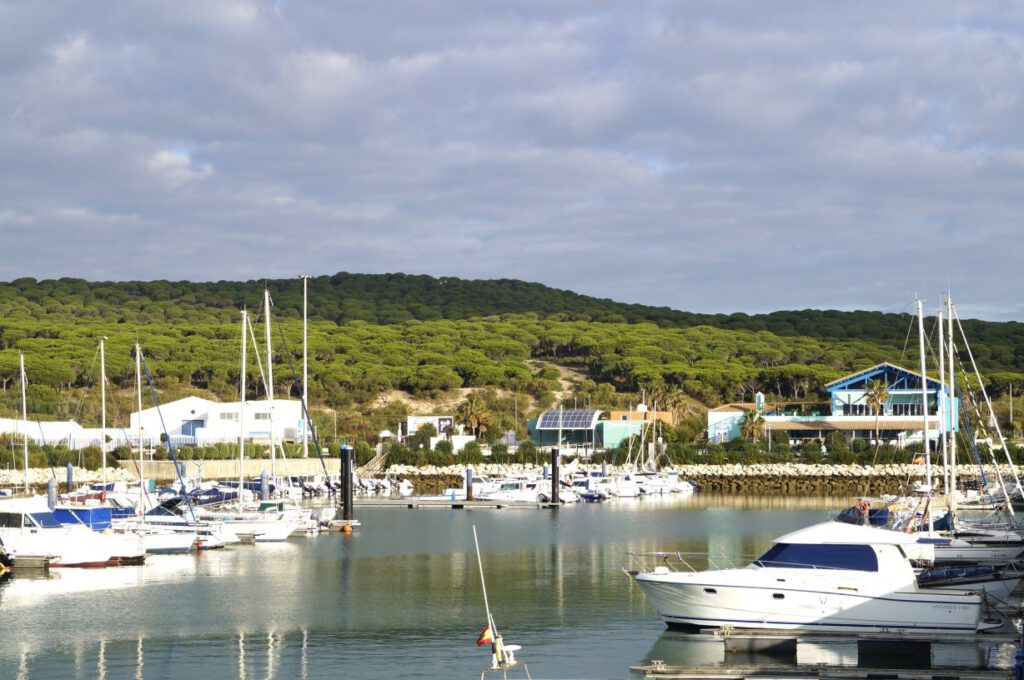
Barbate has green hillsides.
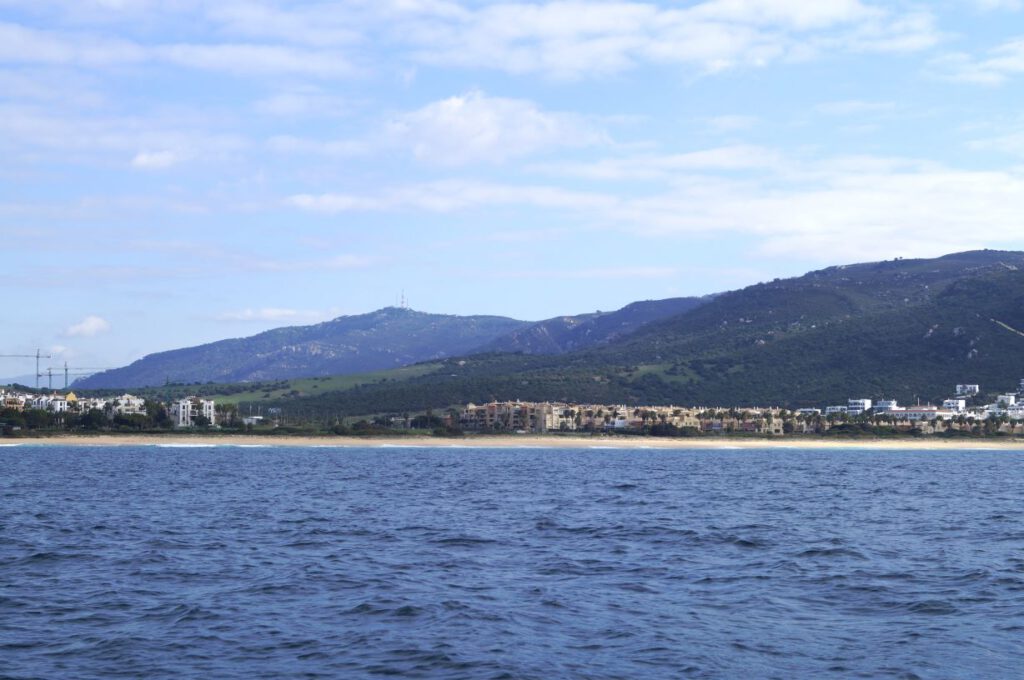
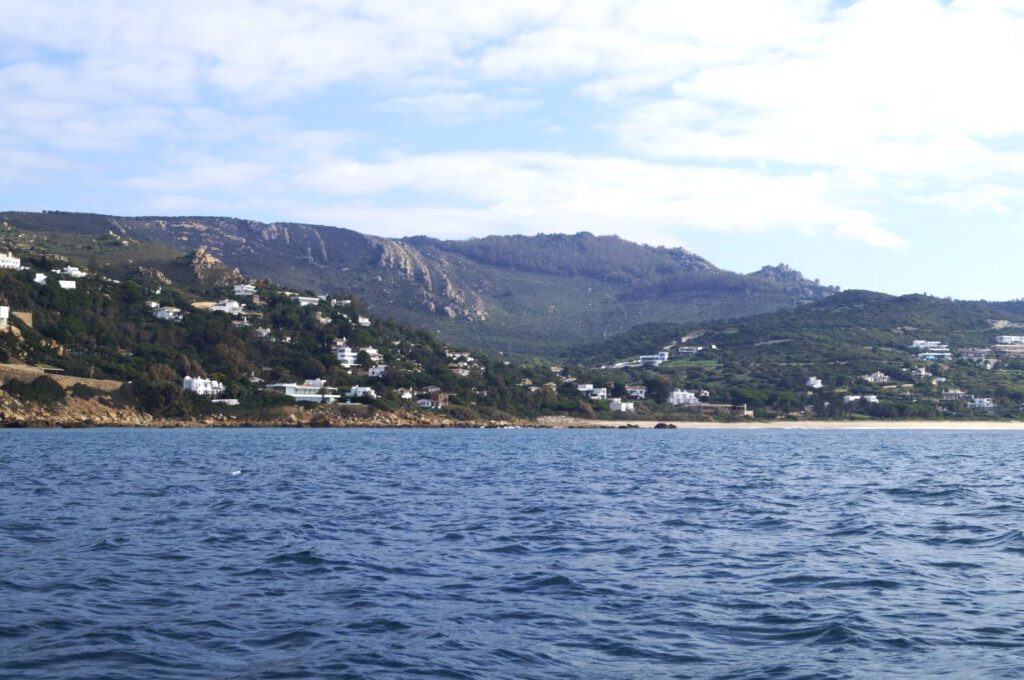
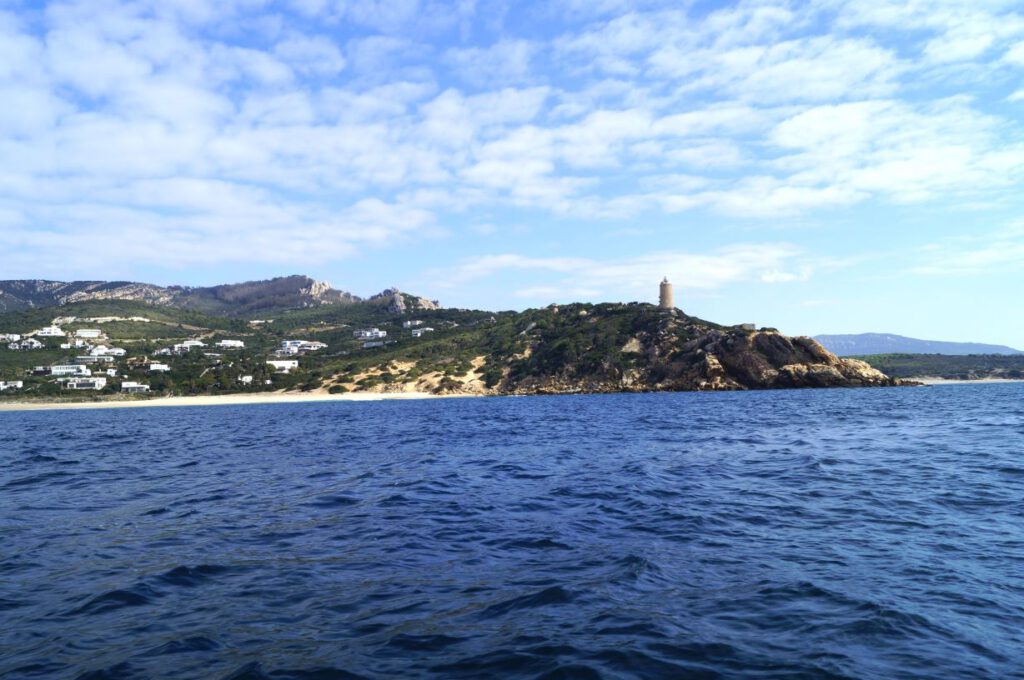
On the way to the Isla de Tarifa, the Sierra de Grazalema drops steeply into the sea, offering spectacular views repeatedly.
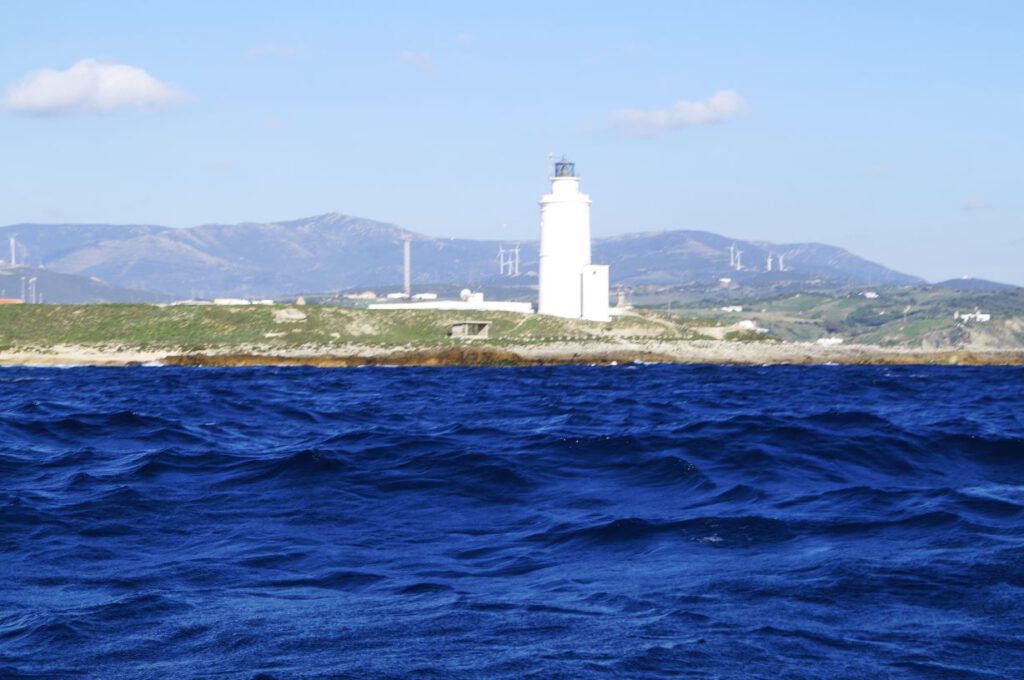
The tower of the Isla de Tarifa, another bumpy rounding in 5 Bft from astern.
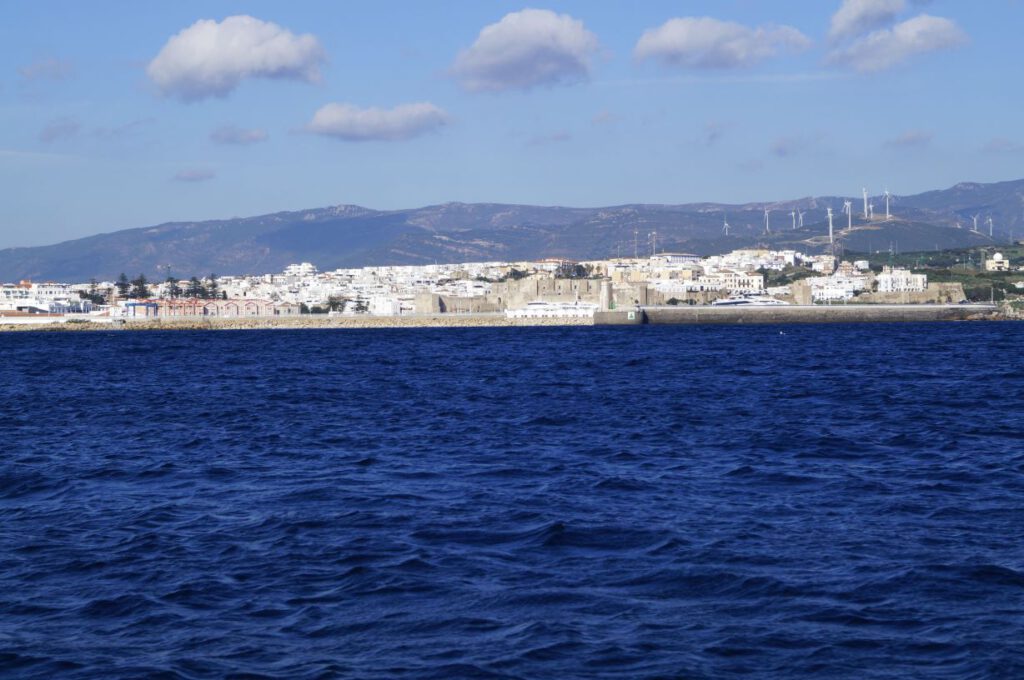
Tarifa itself and easy to see, the waves are almost gone. There is an easterly current of up to 3 knots, that makes the waves are long. That was a relaxing stretch for once.
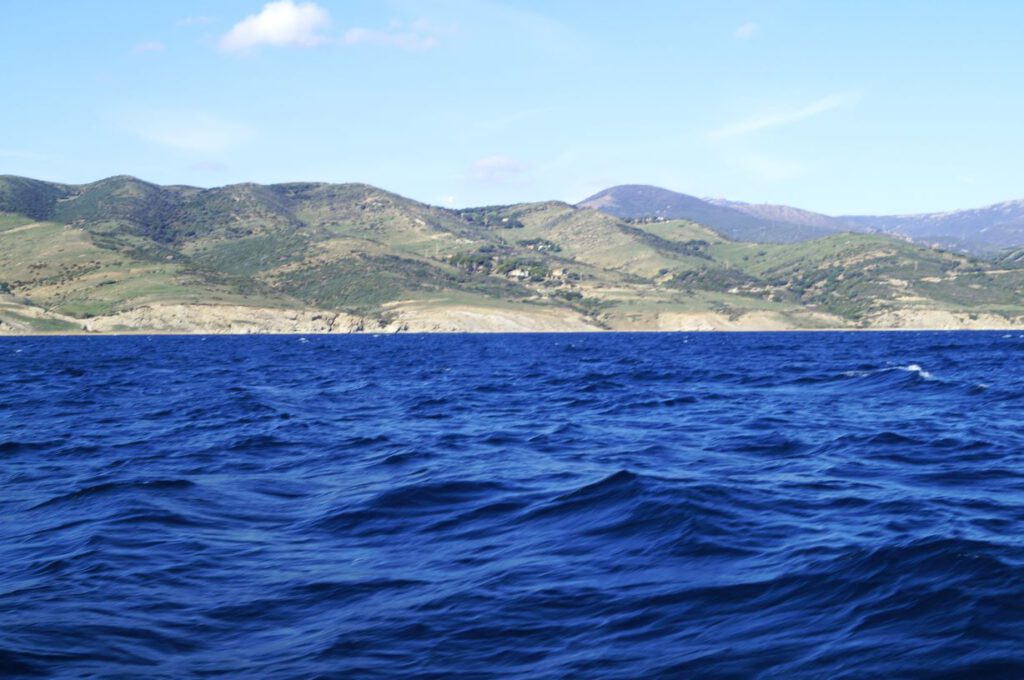
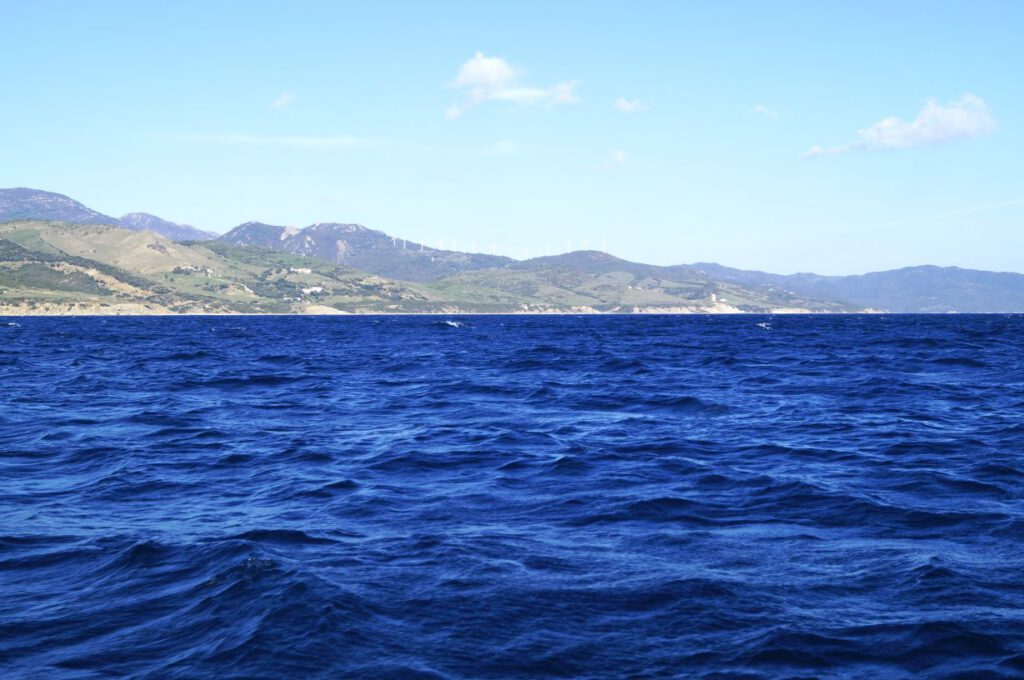

The coast from Tarifa to the Bay of Gibraltar and another cape!!!
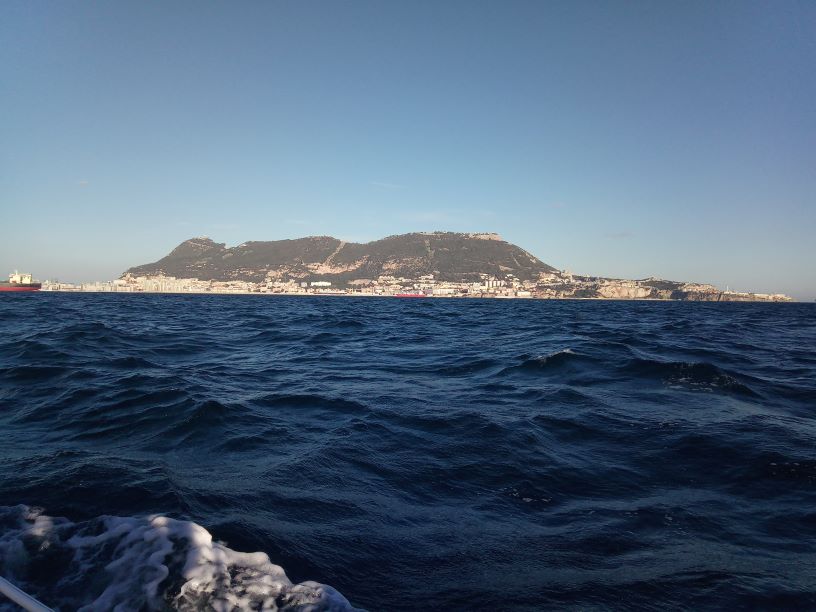
The Monkey Rock of Gibraltar on the way into the bay. In the bay itself, the wind was blowing from the west at up to 7 Bft, the sea was steep, not high, but very unpleasant. The mooring at the harbour office was not entirely successful. How is that supposed to work with a quay wall just under 1.5 metres high? I couldn’t get up there that quickly. How lucky I was, to find lots of helping hands. Here is no floating pontoon; they only have a tidal range of 0.7 metres.
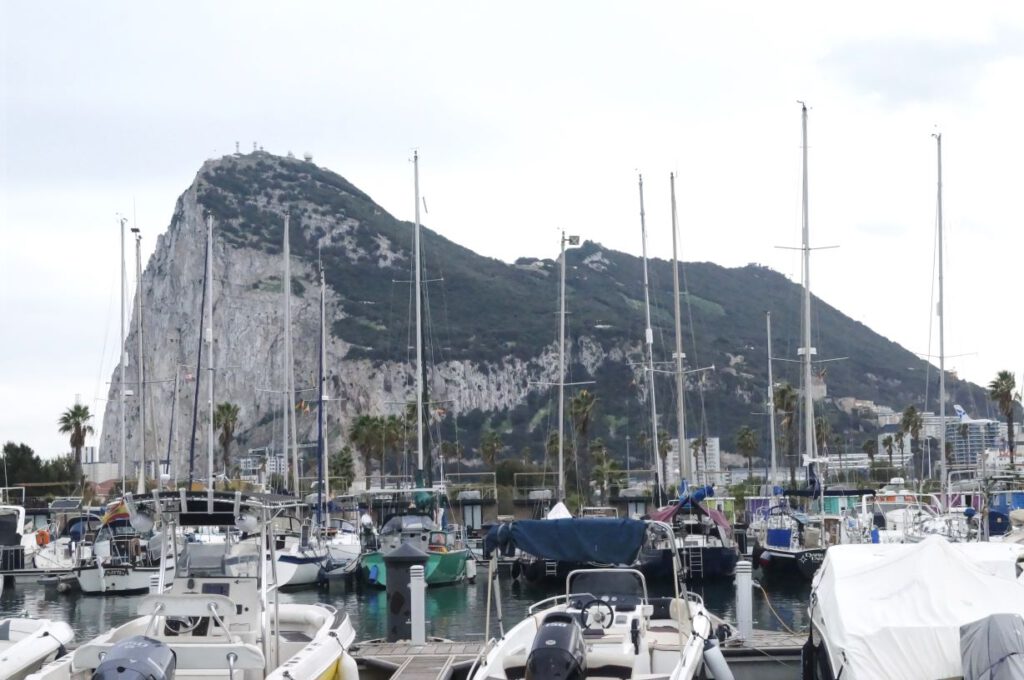
The rock the next morning, the typical view and grey weather!!!
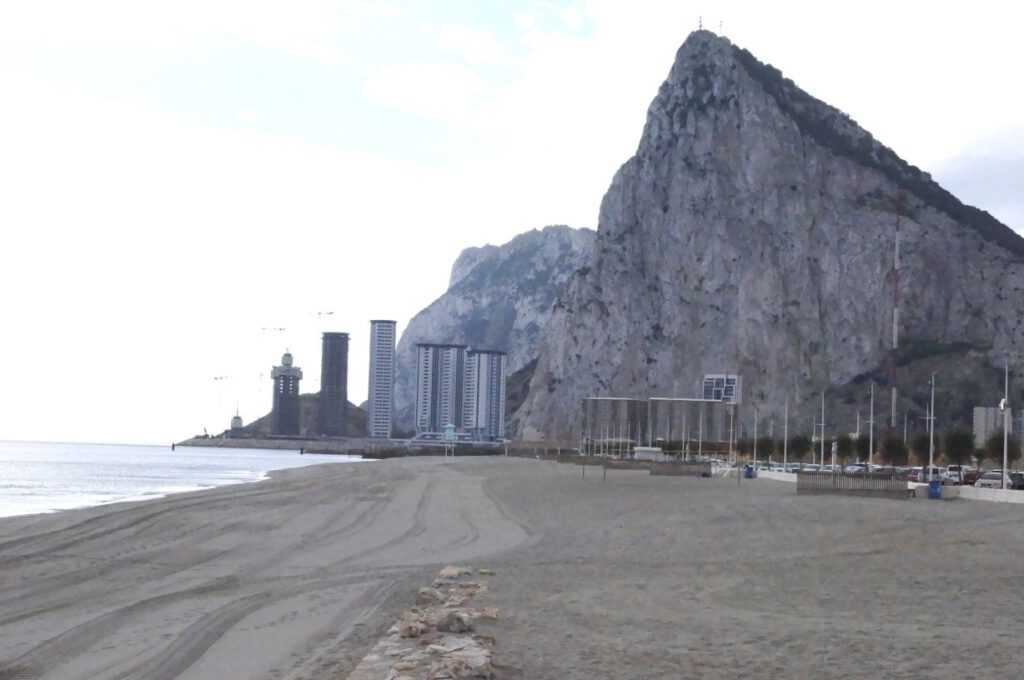
The east side of the rock with strange tower blocks. Yes, they have no place at the foot of the rock.
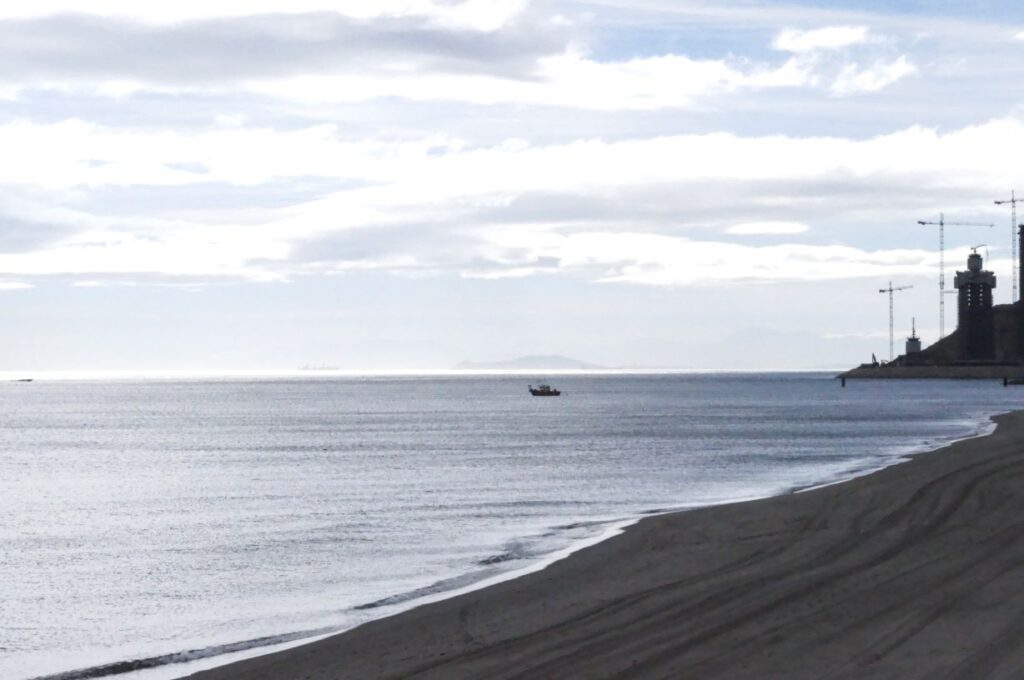
The Jbel Musa in Morocco, unfortunately not so easy to see in the haze. I briefly heard Arabic on the VHF, which sounds totally crazy. Over there is the other continent, Africa.
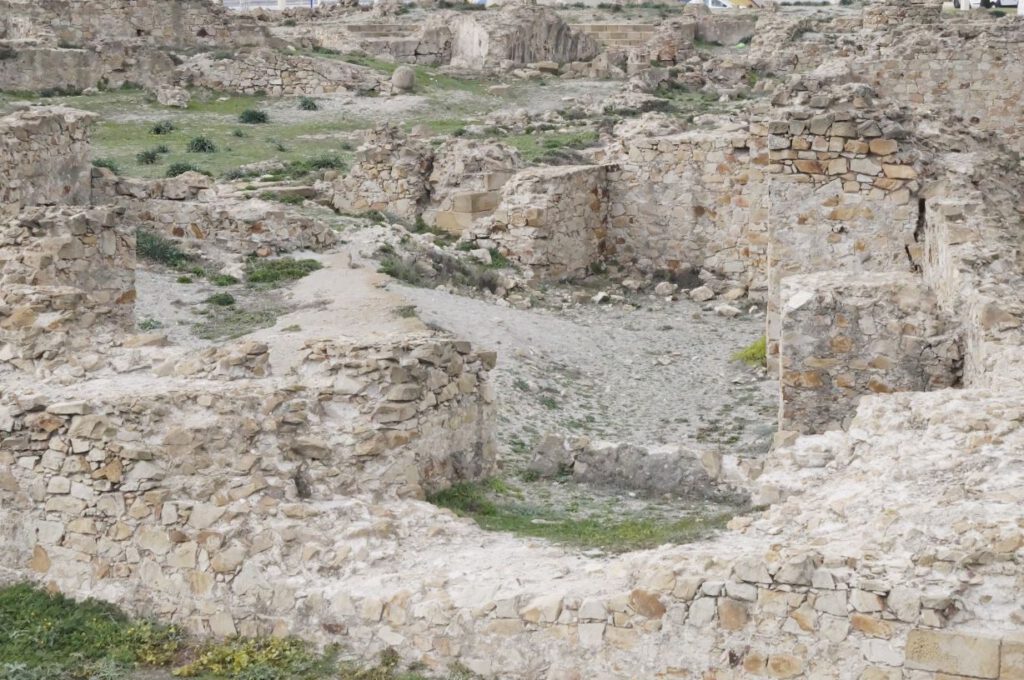
The ruins of Fuerte Santa Barbara, well, I had imagined it to be bigger.
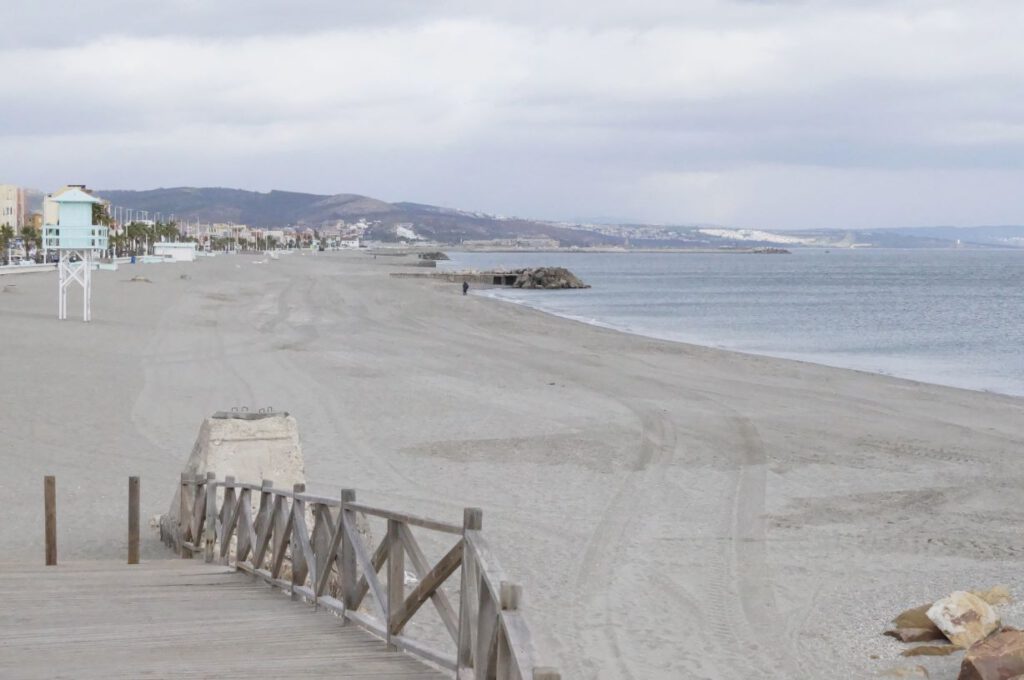
The beach on the Mediterranean, which they call Levante beach.
Now I’m laze away in La Linea for a while, at the moment we have very strong westerly winds in a turbulent weather situation. There’s even supposed to be rain and storms. They have promised better weather from the weekend on. At least, then it will be December!
A little more La Linea, you have to look for the nicer corners. It’s not a tourist town, unlike the rock over there.
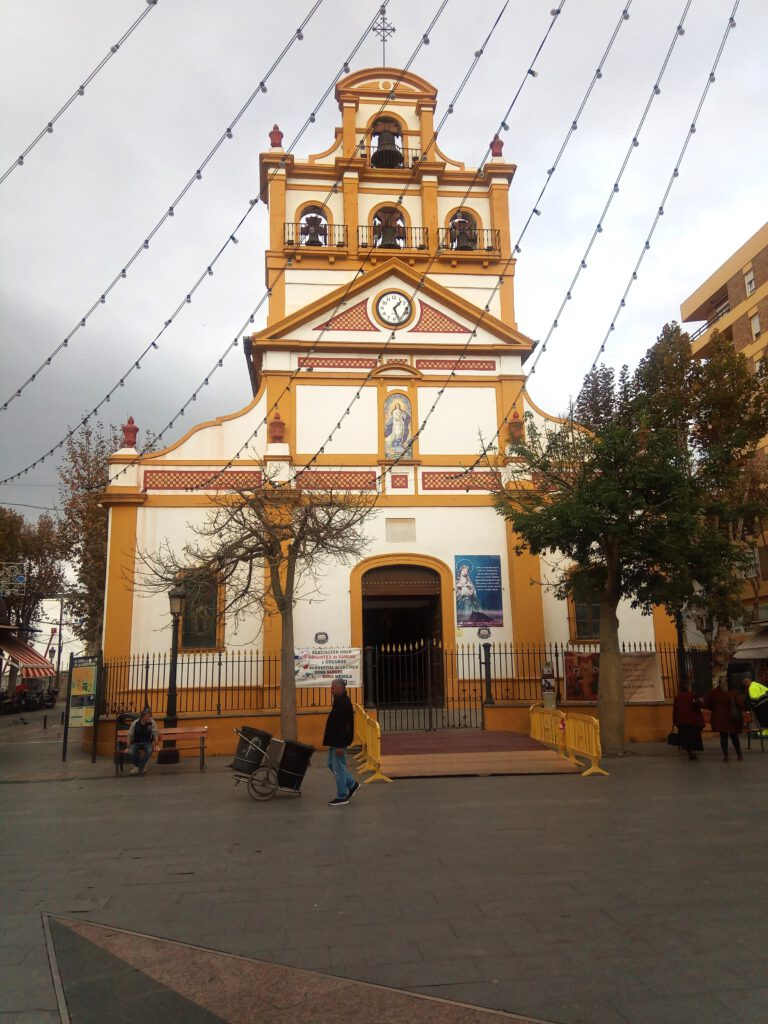
Also, here exist a small church.
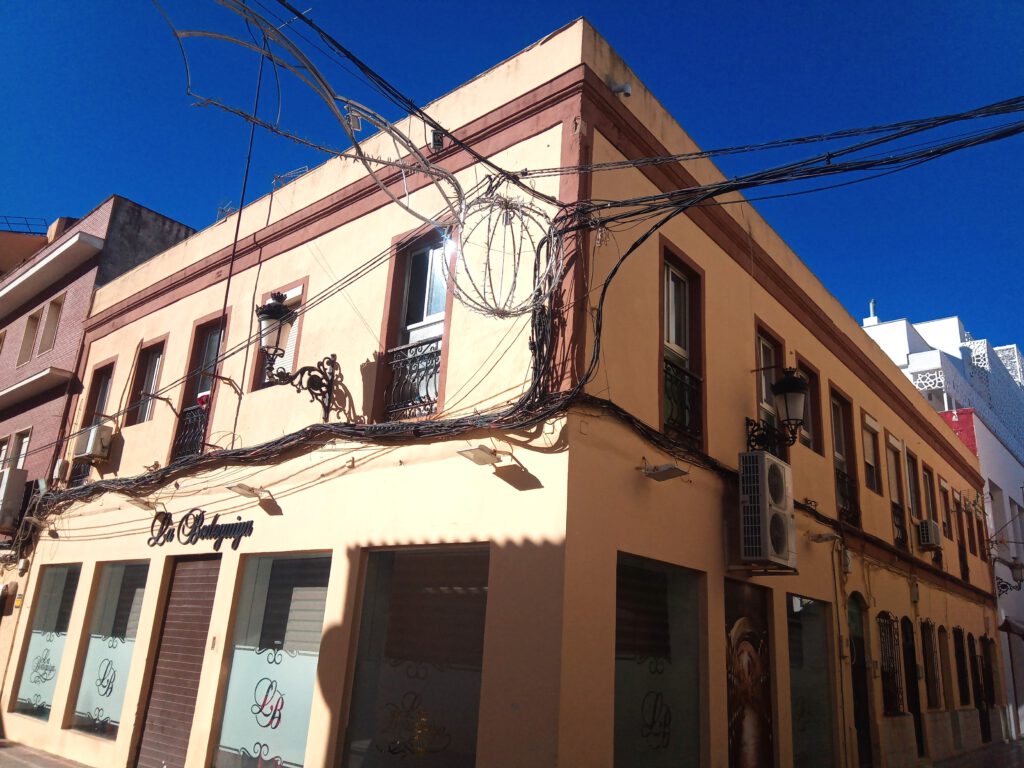
It always looks adventurous with the cables.
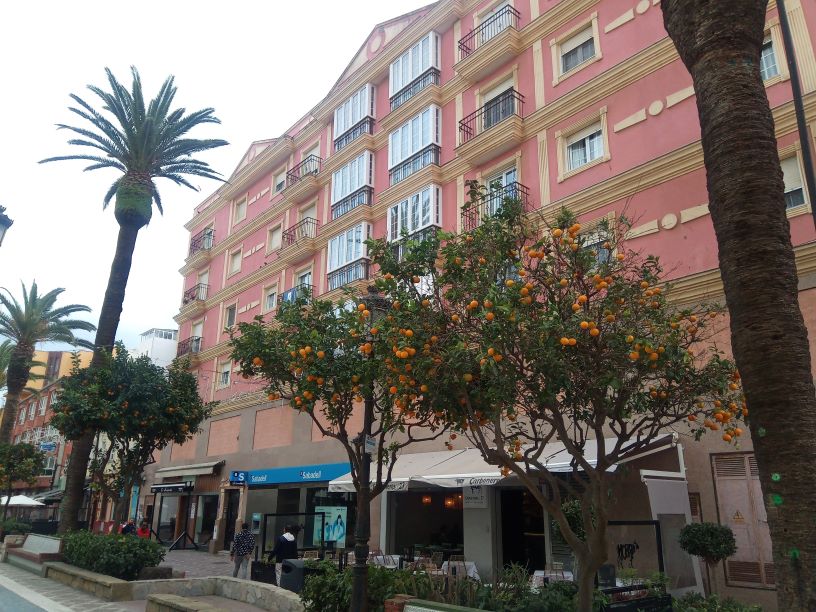
Orange and palm trees in front of houses, something we can only dream about in the north.
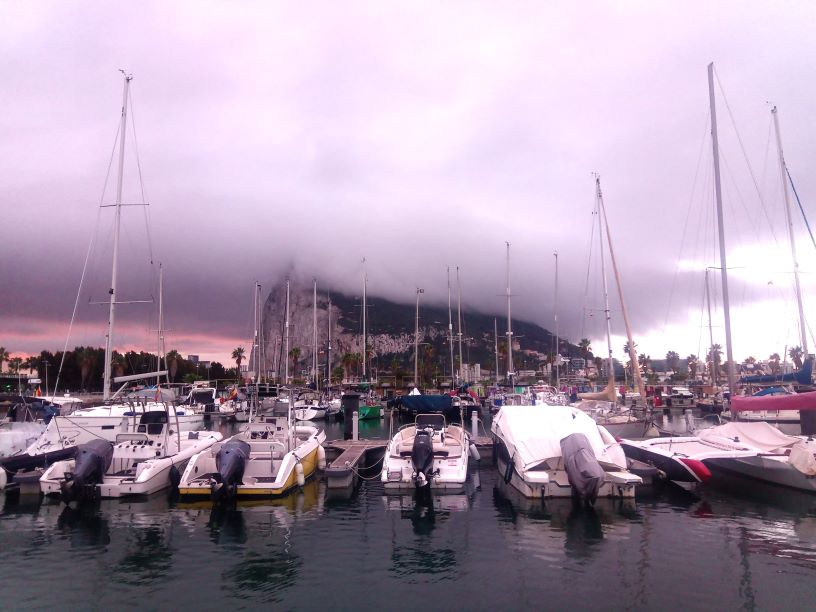
So even the monkeys can take a shower
Tuesday, 5 December
Estepona
Yesterday I dared to circumnavigate Gibraltar by slack tide and calm wind. I just didn’t fancy any more cross seas/overfall. I had to do it in the early, cool morning and set off at 9am. It’s winter and unfortunately the sun doesn’t rise until 8.20am, and it takes a while for it to warm up.
The southern tip of Gibraltar, they’ve managed to build a football stadium and a mosque here.
Once again Africa, now very clearly to see the Jbel Musa. On the right, the view through the Strait of Gibraltar to the Atlantic.
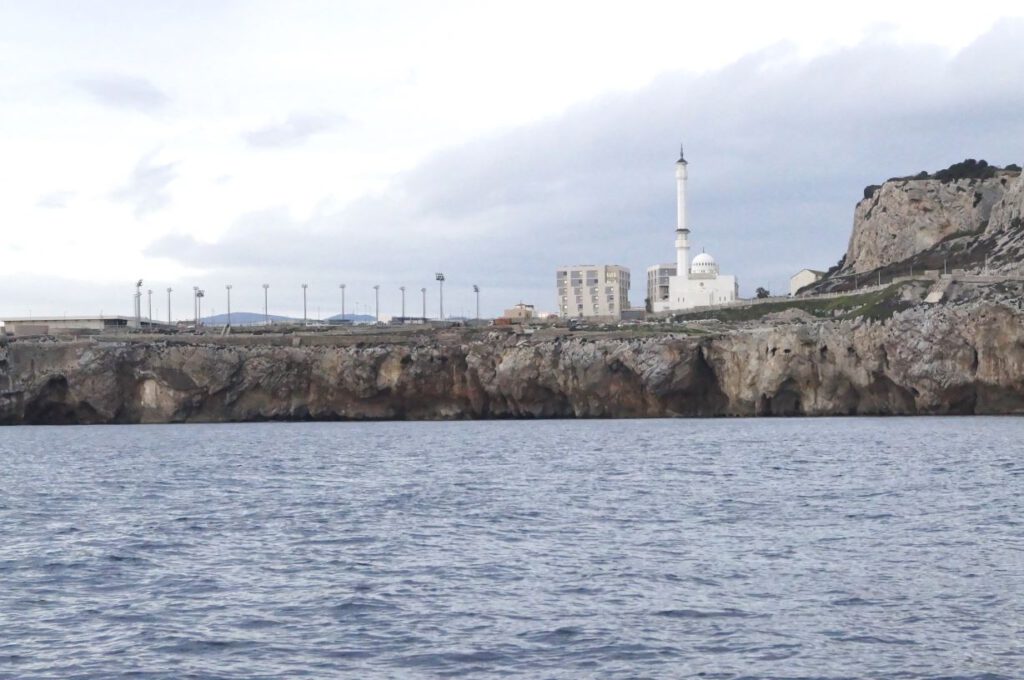
The southern tip from the east with the mosque and football stadium
The Sierra de Grazalema just before Sotogrande. Incidentally, this mountain range is Andalusia’s first nature park, which is why there are hardly any houses to be seen, in contrast to the coastal strip. But I’ll overlook it, it’s not beautiful.
Also the Sierra right next to Estepona
Sunday, 17 December
Aguadulce
First the Costa de Sol, then the Costa de Tropical and now the Costa de Almeria, all the coastal areas have names and the mountains (sierras) anyway. Only the Sierra Nevada is actually interesting, as the ski season has already started there. The lifts are in operation, but at an altitude of over 2000 metres.
From Estepona I visited the ports of Fuengirola, Caleta de Velez, Motril, Adra and Almerimar and am now here in Aguadulce for the winter. There is no point in driving further north, as it gets quite cold up there, especially at night. The days are short and with a maximum travel time of 6 hours, only short distances are possible. The sun only warms you from 11 a.m. onwards. That just doesn’t leave enough time for sailing, it gets dark again at 6 p.m. Therefore, I’m making slow progress. That is why I’m going to take a winter break here and come back in March.
Everything I have seen of the country so far has completely met my expectations in a negative sense. From Sotogrande onwards there was continuous development, build up areas in an often very functional style, very tall houses without any particular design features. It’s about quantity and not quality. The only exception was Caleta de Velez, the transition point from mass tourism to the vegetable garden of Europe. From Motril onwards, I was able to marvel at deep snowfields that are nothing more than greenhouses. The entire coast covered in plastic. The only highlights are the mountains. The sight of a coast like this doesn’t make me excited, but rather makes me want to not stay here for long, but just move on.
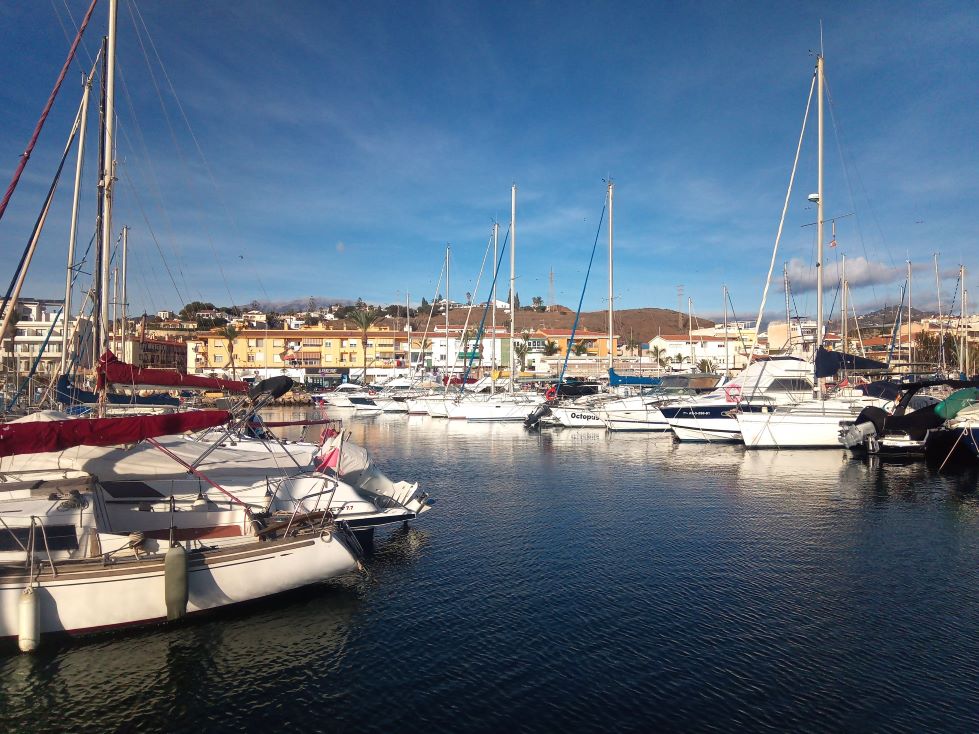
Caleta de Velez
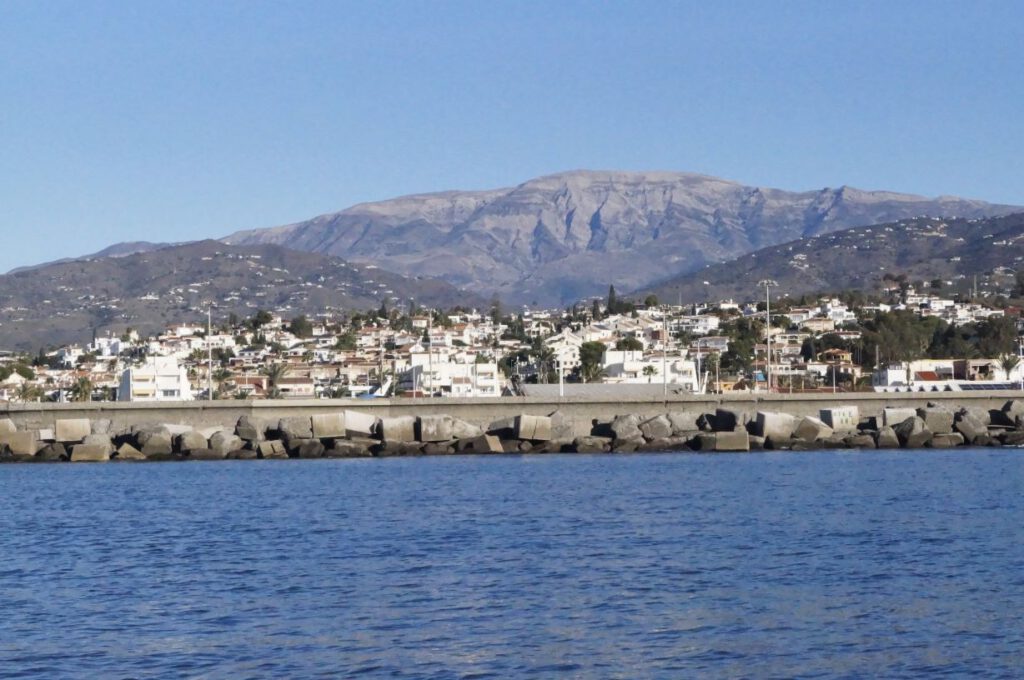
Caleta de Velez with mountains. Here, the Sierras are very barren.
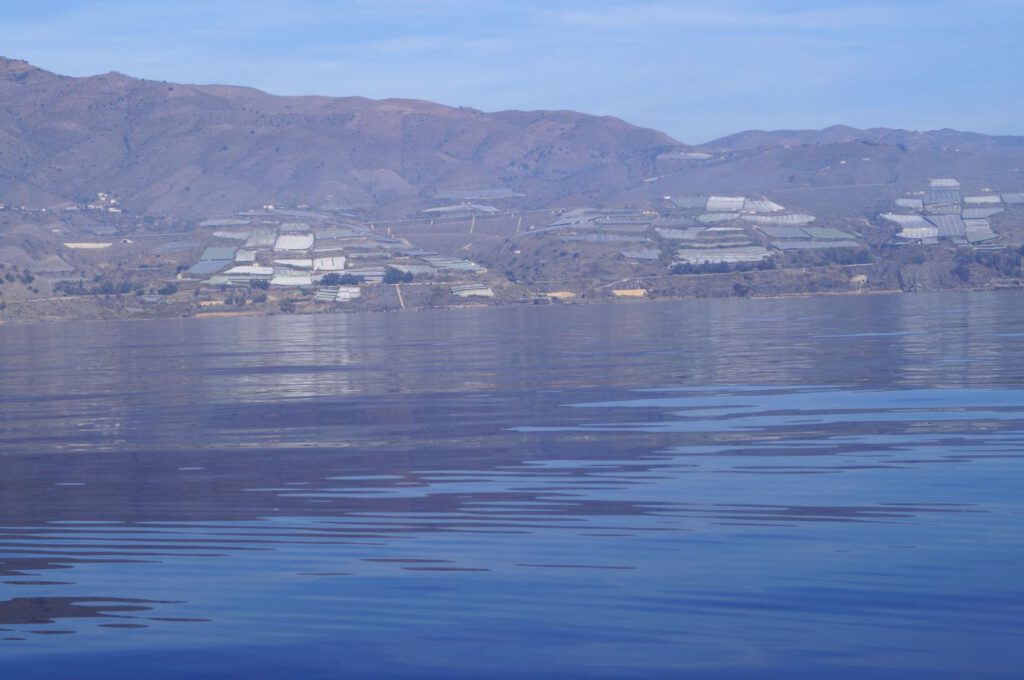
The plastic world between Motril and Adra
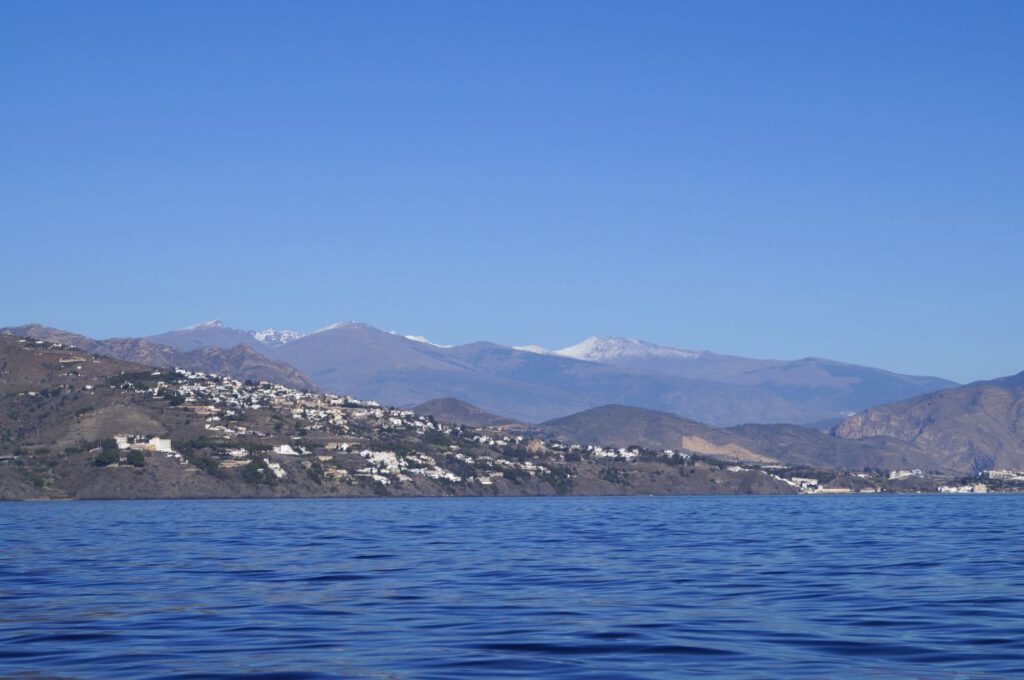
The Sierra Nevada near Motril, with snow peaks.
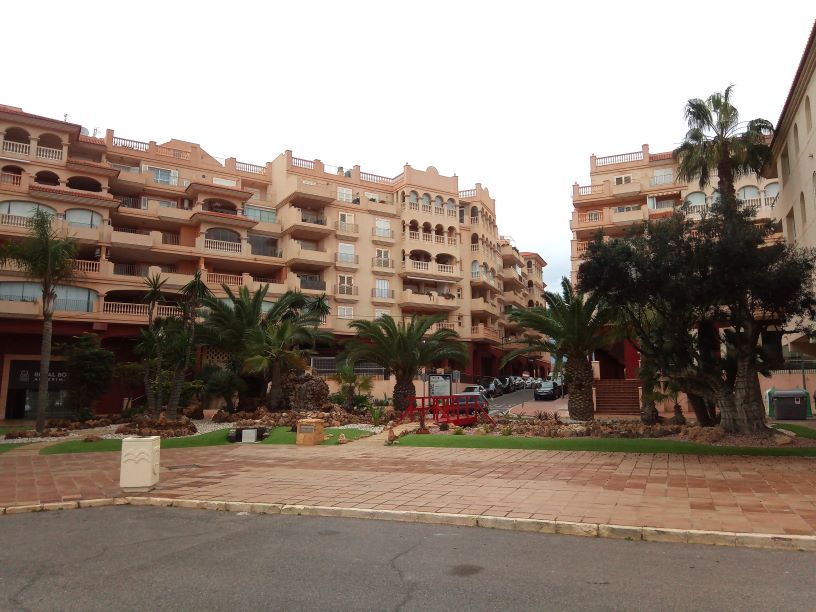
Green places in Almerimar. If there are no hundreds of equal buildings, you could also enjoy the architecture.
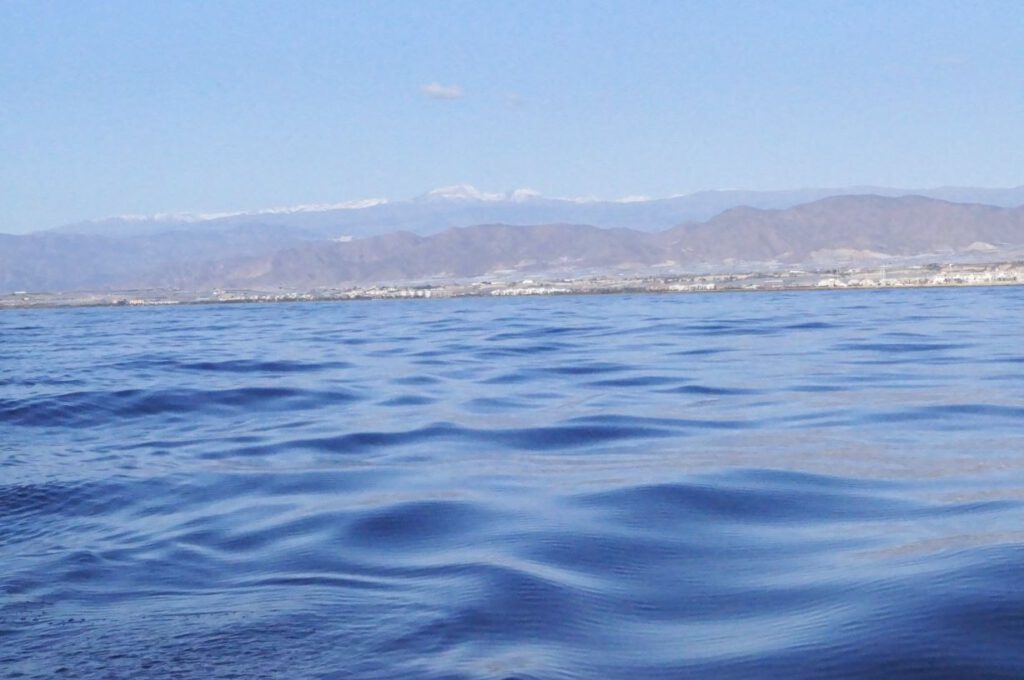
Last view of Sierra Nevada, you can see the larger snowfields.
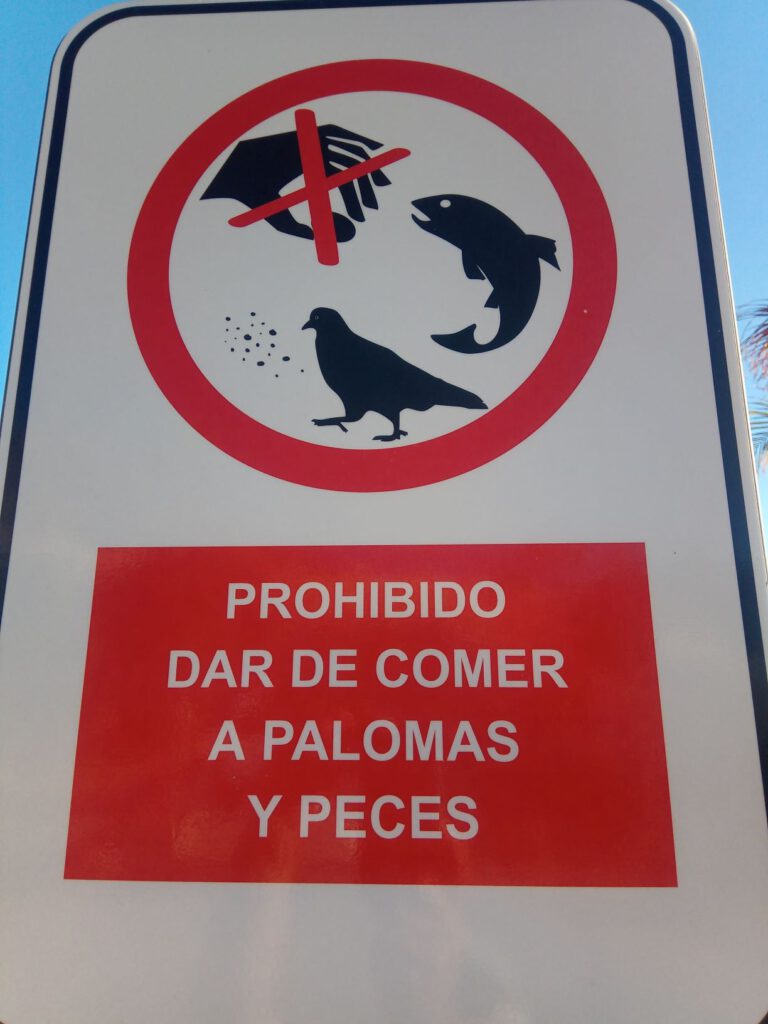
Funnies in Aguadulce: feeding fish is also forbidden!
The rock aft in the harbour of Aguadulce, fortunately the harbour basin has a wide of 80 m, because something comes down from above from time to time.
Now I’ll say goodbye until next year.
The rest of Andalusia
Tuesday, 19 March 24
Garrucha
Now I’ve been back on board for a week. Spain surprised me. On the flight to Almeria via Madrid, I saw a lot of snow. I had hardly ever associated snow with Spain before. Well, of course there are the Pyrenees and the Sierra Nevada. There can be snow at over 2000 metres, but directly north of Madrid and in the foothills of the Sierra Nevada?
Another film from the departure in December, the airport is located in a Mar de Plastico.
Moreover, this is what the port of Aguadulce looked like from above, the red wing tip pointed directly at amica in the harbour.
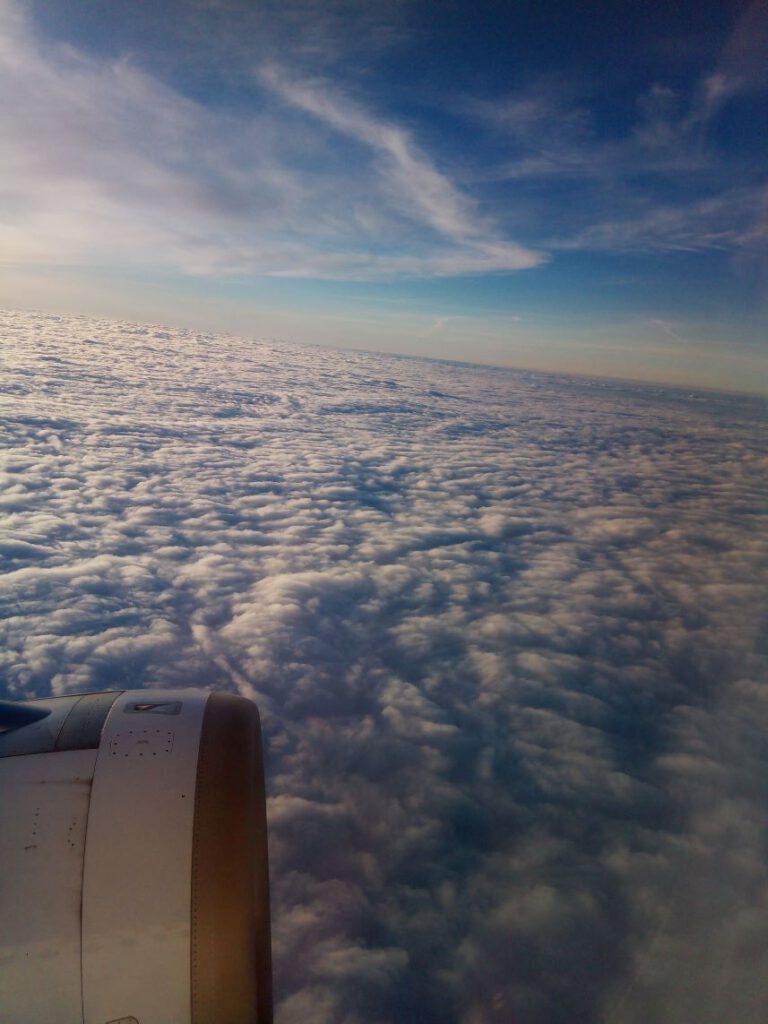
Nice flight from Hamburg to Madrid
Snow on the mountains near Madrid
I was sitting on the wrong side of the white Sierra Nevada, but to the east there were also snow-covered ridges of the Sierra de Maria and the Sierra de Los Filabres, both just over 2000 metres high.
Already during the landing approach: plastic surfaces up close.
And a very dry landscape. No wonder that they shot western films here in the Sierra Nevada. It looks like dusty Mexico here.
I had to endure a few more days in Aguadulce because it took 11 days to deliver my parcel by DHL from Hamburg to here, including 1 week to Barcelona! But the time was useful for arriving and air-conditioning. Now I’m two trips further on in Garrucha, the last Andalusian harbour. After that comes the Murciaregion.
Always following my motto of taking a day’s break after a longer trip. I rested in San Jose (about 25 nautical miles away). At the moment, I’m extremely exposed to the sun, the sea is hardly moving because it’s calm again. It’s not even warm at 20 to 25°, but the sun is burning fiercely. I can’t use a bimini, but I do have a parasol on board. Attaching it aft in such a way that it provides shade still require some thought. I’ll be sure to document the solution.
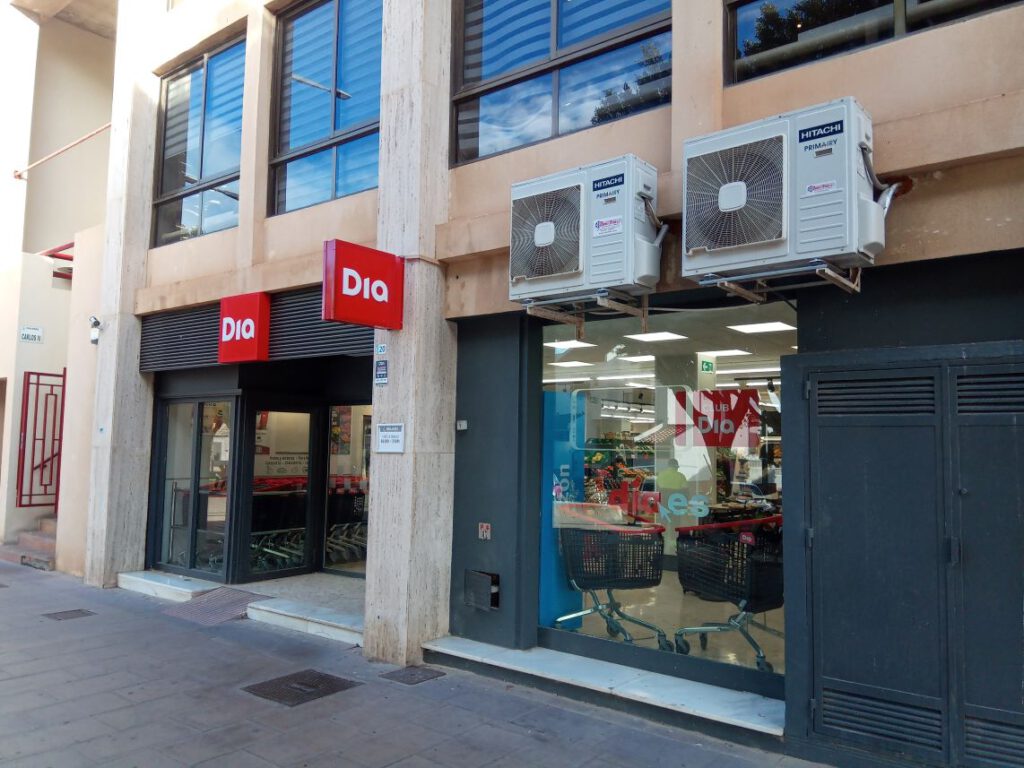
My shopping destination in Aguadulce: the Dia supermarket
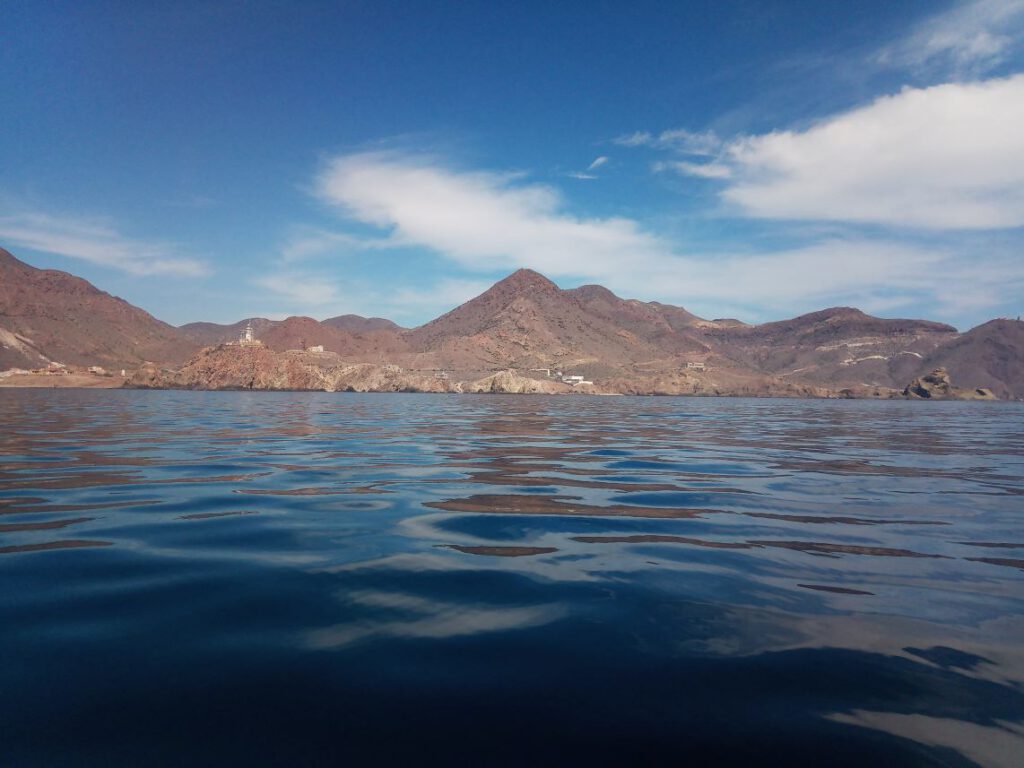
Cabo de Gata
From Cabo de Gata (I have to correct myself, Gata doesn’t mean cat here but agate, a mineral) the coast to the north is “Nature”, which means no buildings, no people, just permanently interesting rock formations. This is also a Parque de Natural, a nature reserve. I didn’t see the first buildings again until I reached the village of San José, my destination. This is a manageable tourist town, even if there were none to be seen. I was the only guest in the very small harbour for the second night. You could feel very lonely at night, but during the day, there was plenty of life, in the café and supermarket. And from lunchtime on there was food at the harbour in the “4 nudos”, but they were all gone again by nightfall. There are only cats here and they even visited me at board.
The architectural style is very interesting, they call it pueblo building.
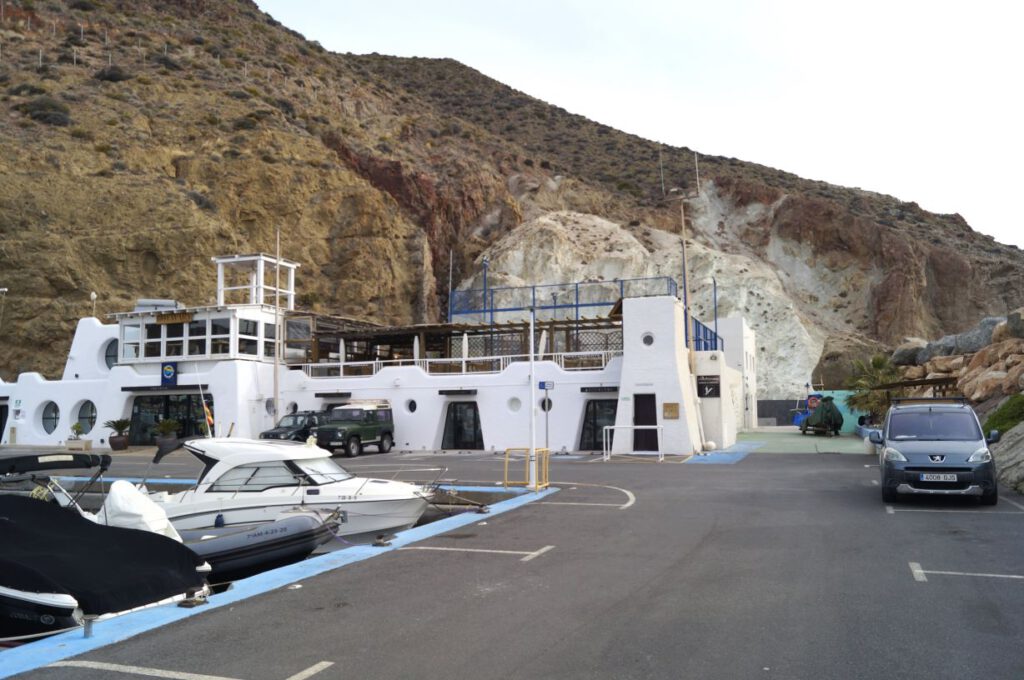
Both the harbour office
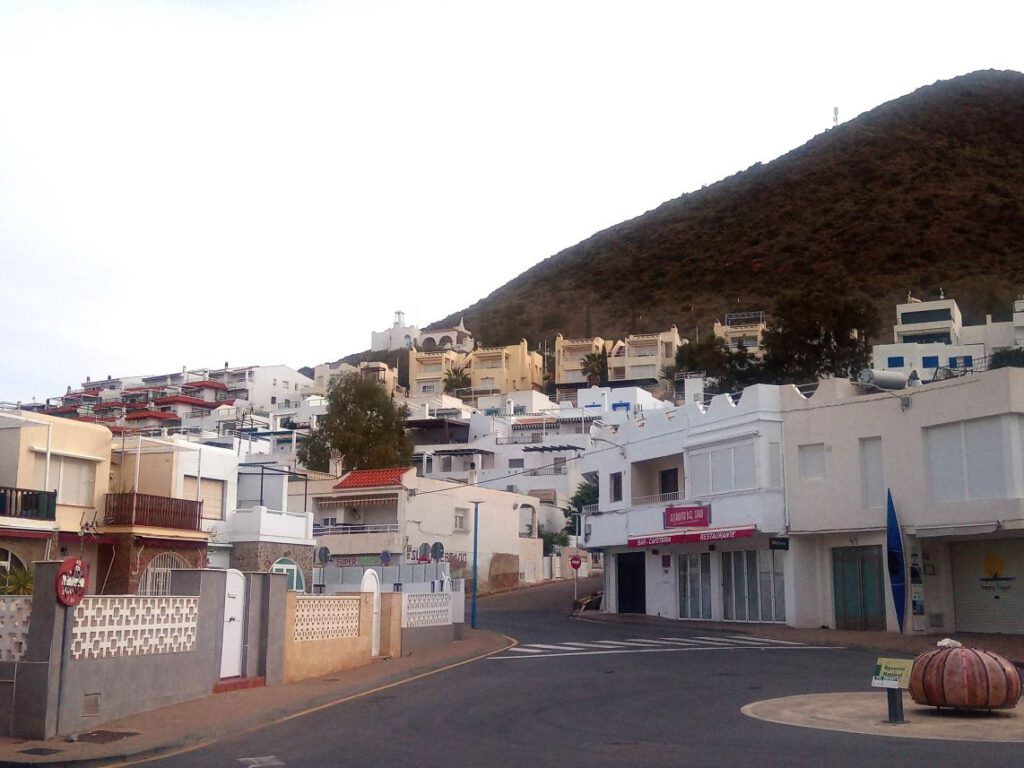
as the buildings on the slope
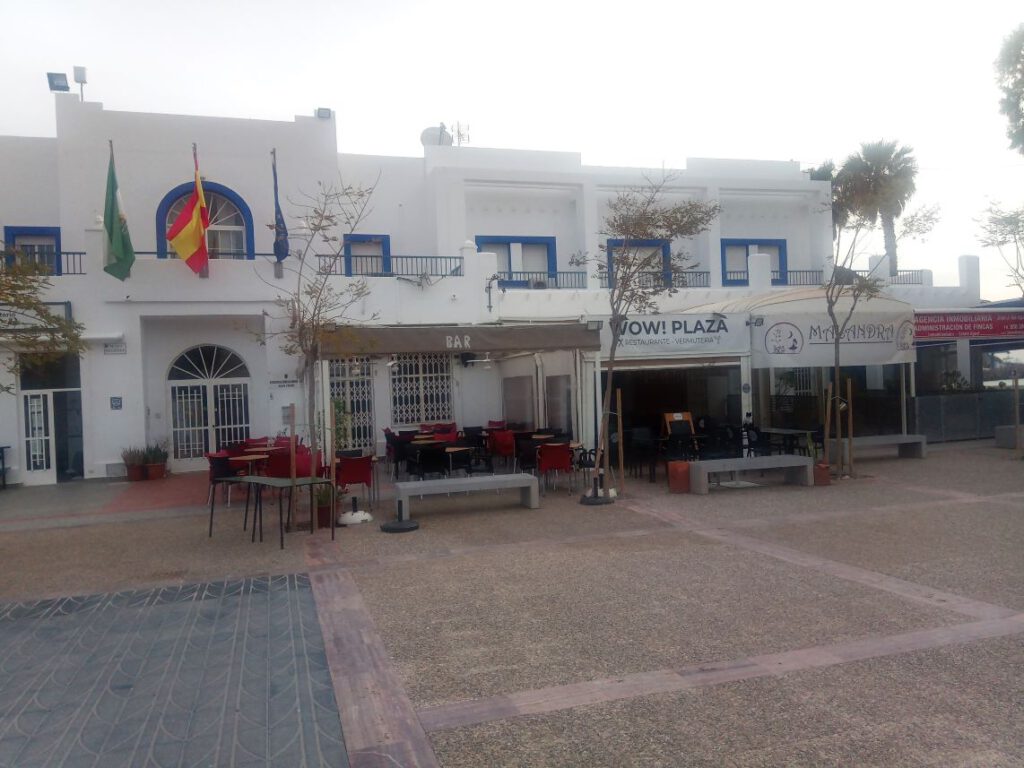
and also in the village.
Amica in the harbour. You can see the stern lines coming out of the water. No, there is no anchor, but a concrete block in the water. Lines go from there to the quay, which the marinero takes out of the water when mooring. It seems to be the same everywhere here in Spain. I have used to these ropes, which are covered in all sorts of things.
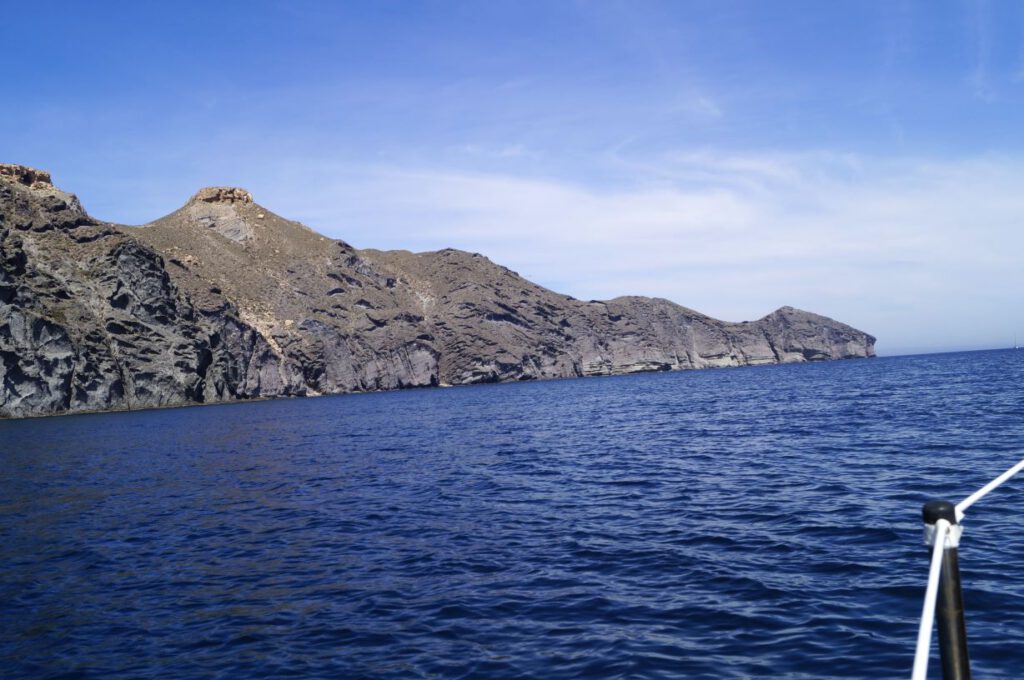
The coast north of San José
Punta de Loma
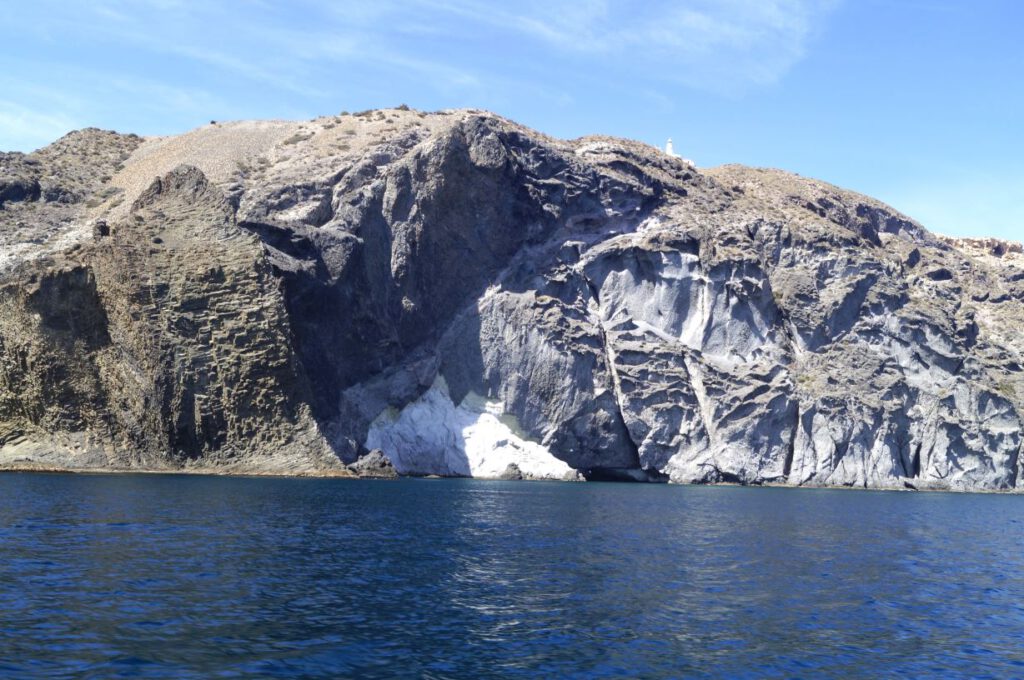
Punta de Polacra
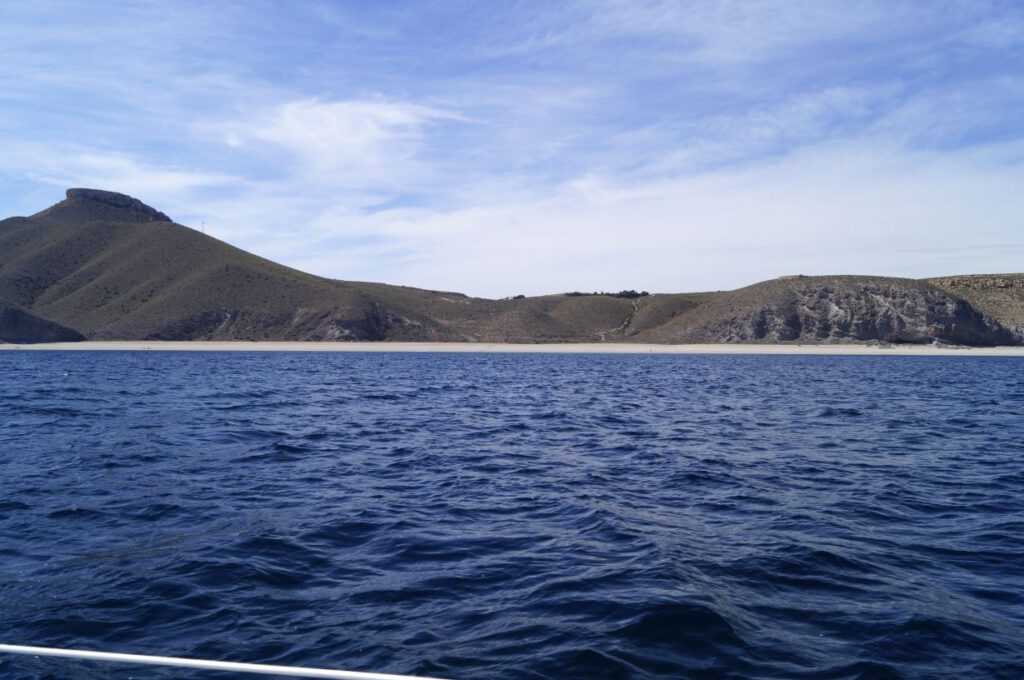
Shortly before Caboneras, an industrial and fishing harbour, there was suddenly a lot of beach.
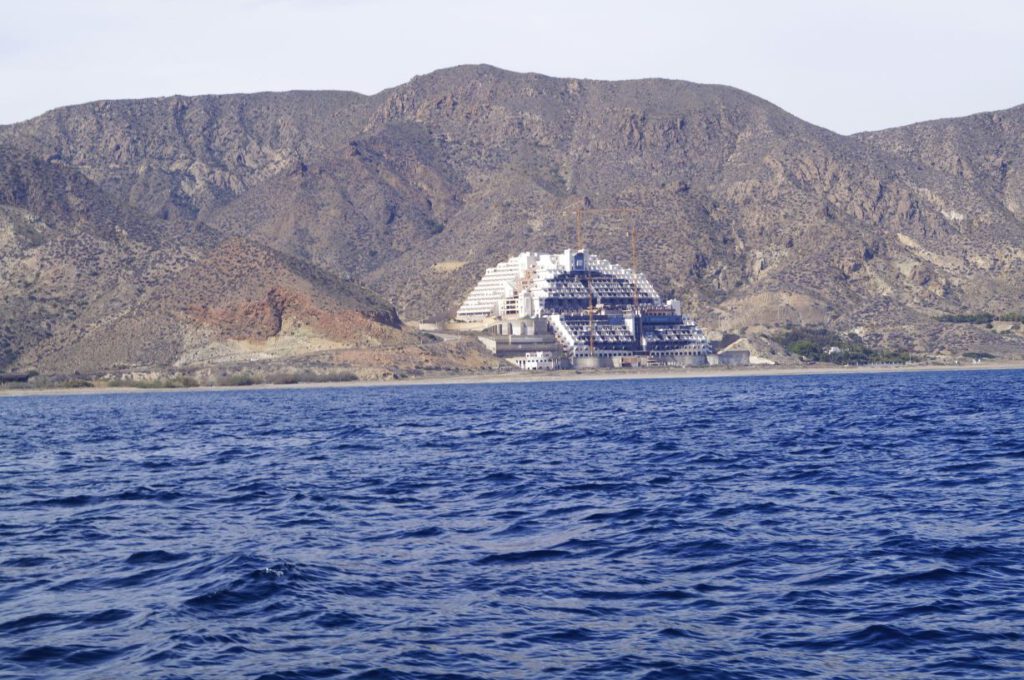
To the north of Caboneras was one of those ominous, gigantic construction sites. A huge hotel complex without life. Obviously, the construction was shut down. The construction cranes are still standing.
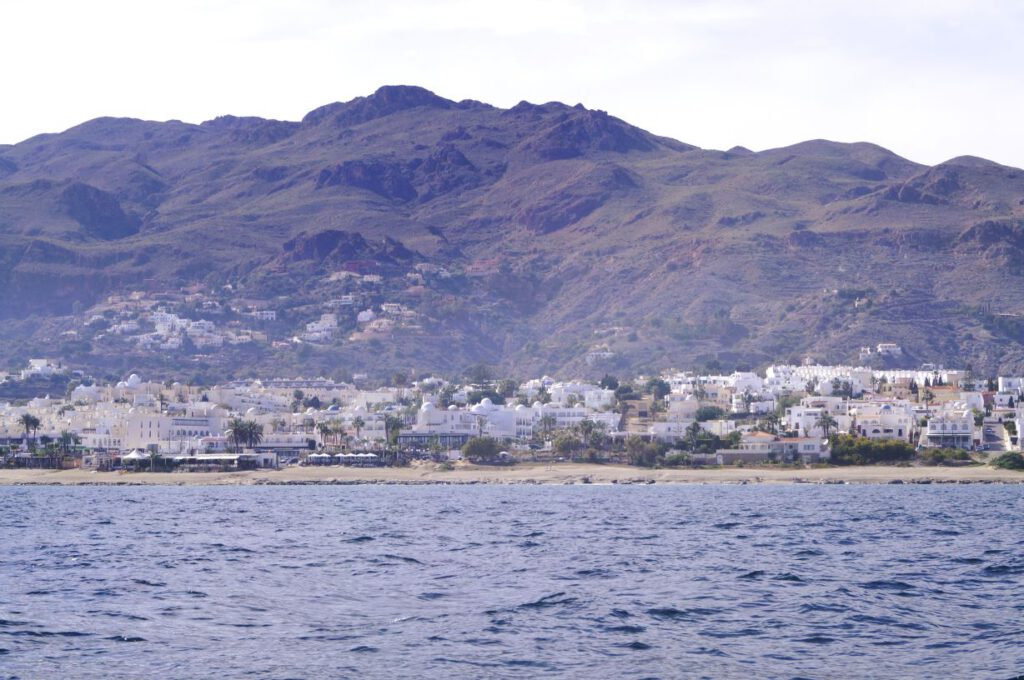
The tourist corner of Mojacar just before Garrucha is more beautiful. Very Moorish architectural style. So it does work!!!!
Here in Garrucha I take a longer break, it is extremely favourable to lie here and from the middle of the week winds come up from the north-east with gusts of up to 40 knots in places. Well, is there wind in the Mediterranean after all? Then strong winds with swells of up to 2 metres! It’s all coming exactly from the direction I need to navigate. Only from Cabo Palos, certainly a week away, does the coast run in a more northerly direction. I had a week in Garrucha, so I had a closer look at a lot of things.
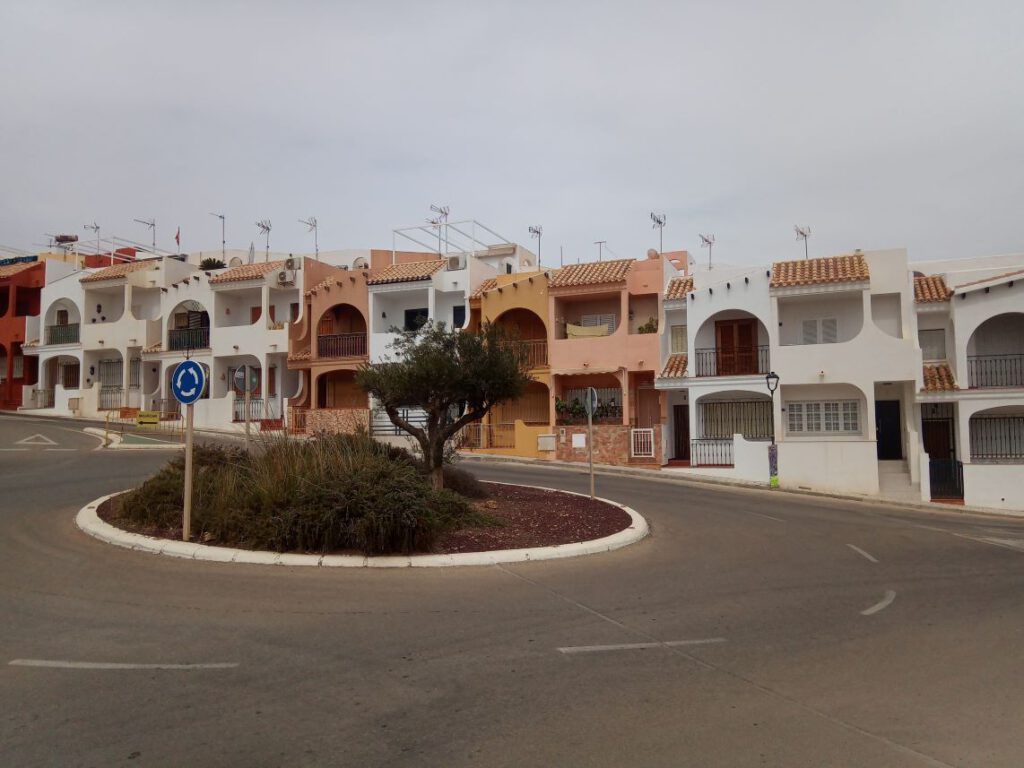
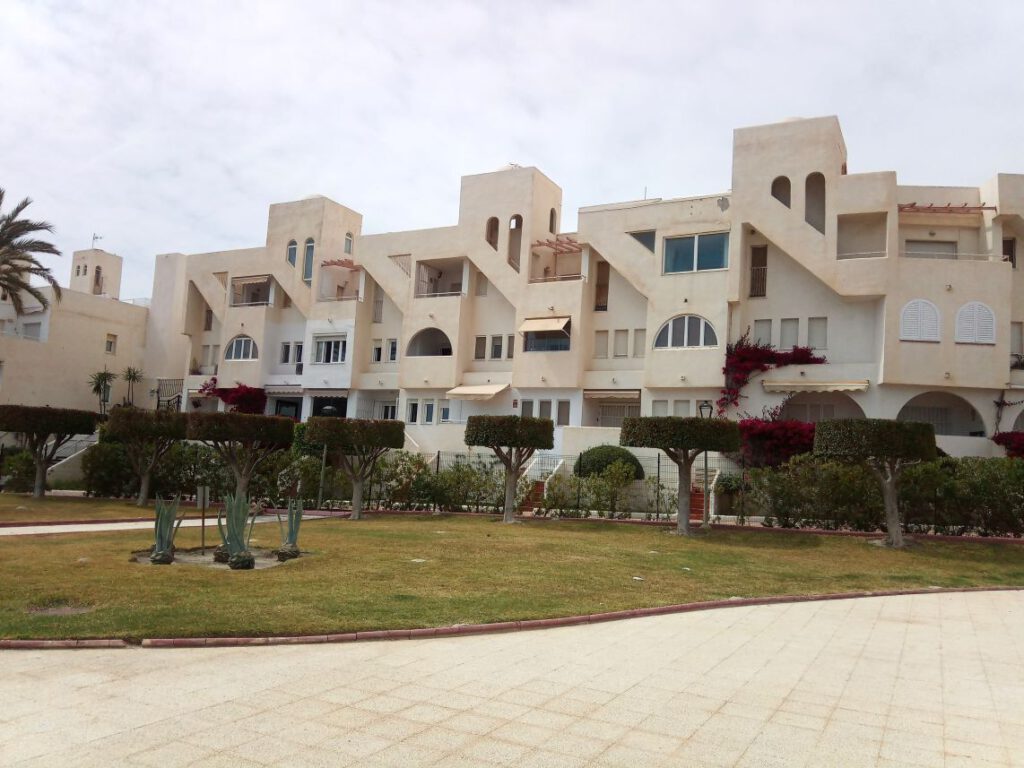
The architectural styles are very interesting, almost on every corner.
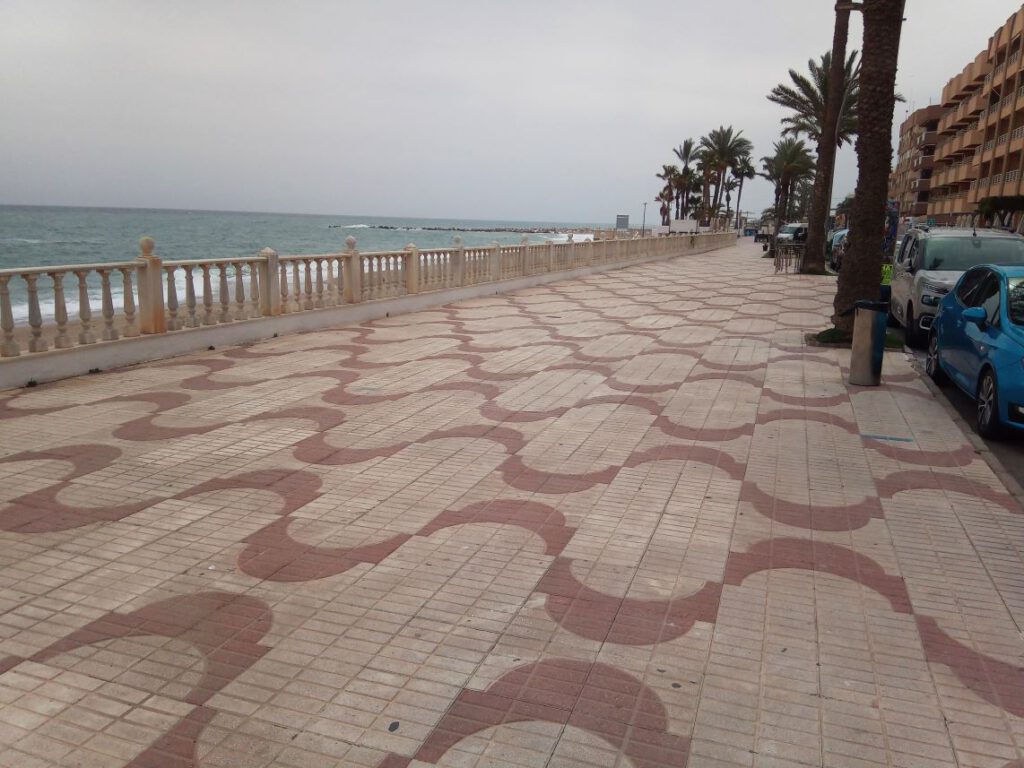
You can also find structure in the pavements on the seafront promenade.
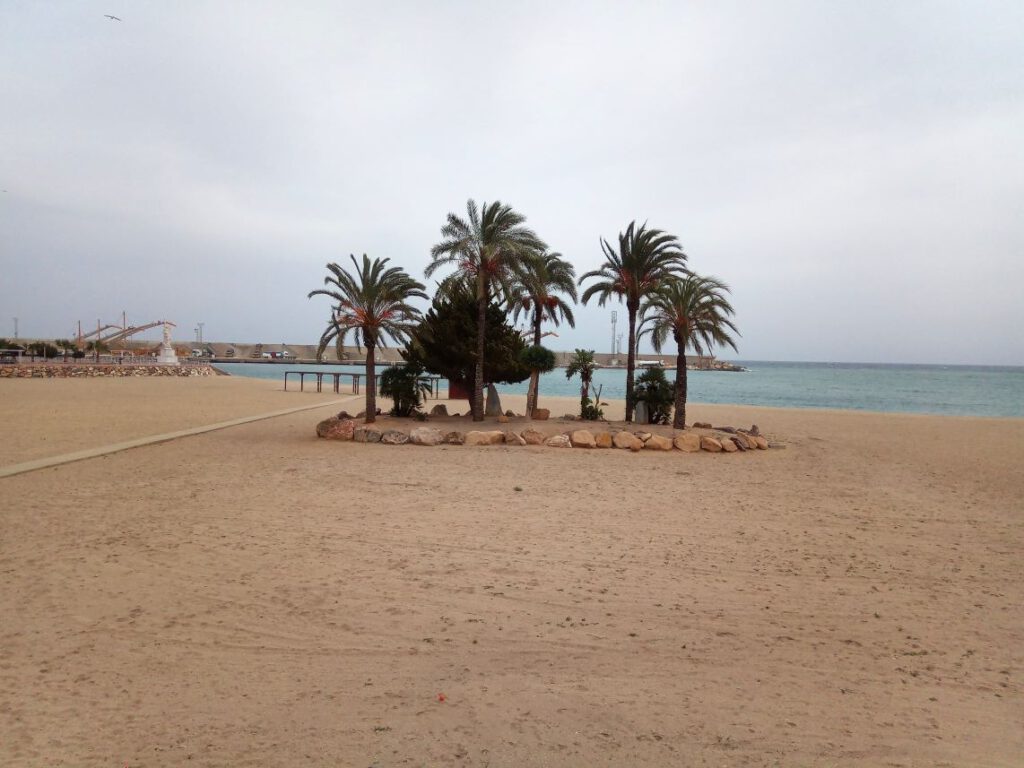
An island of palm trees on the beach.
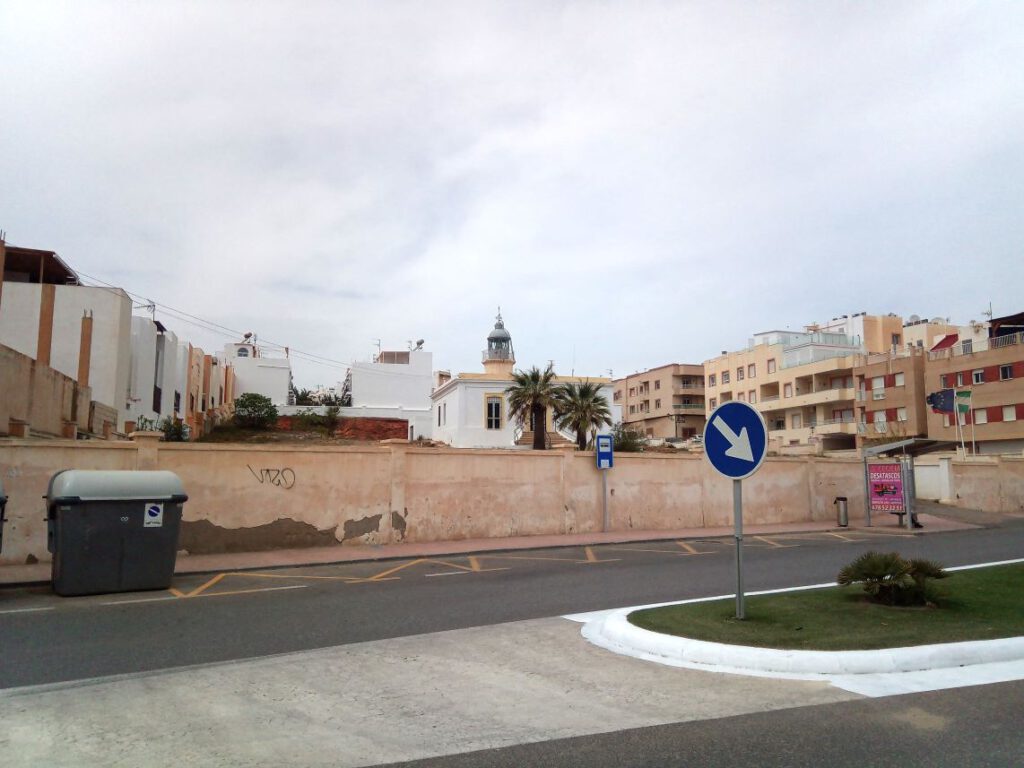
An old light tower that has been overtaken by development.
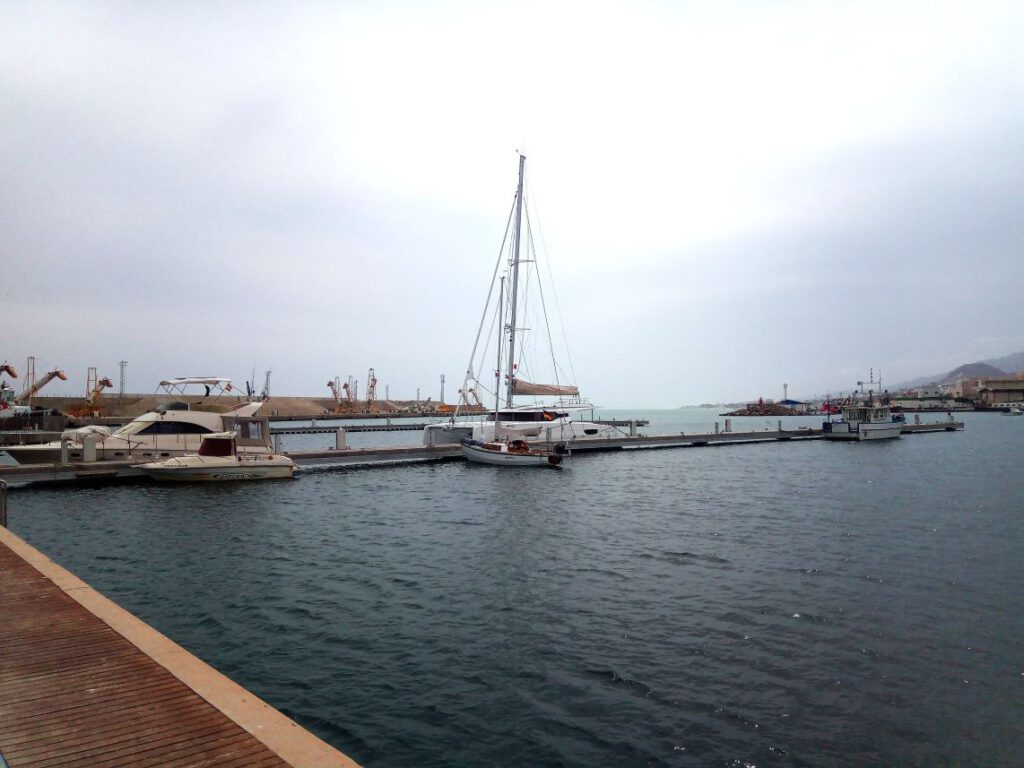
And amica lonely in the harbour. In the seven days I stayed here, there were only two other guests. The large motorboat and the large catamaran. The sand loading point visible in the background makes the harbour very dusty.
And here it continues: Murcia and Valencia
